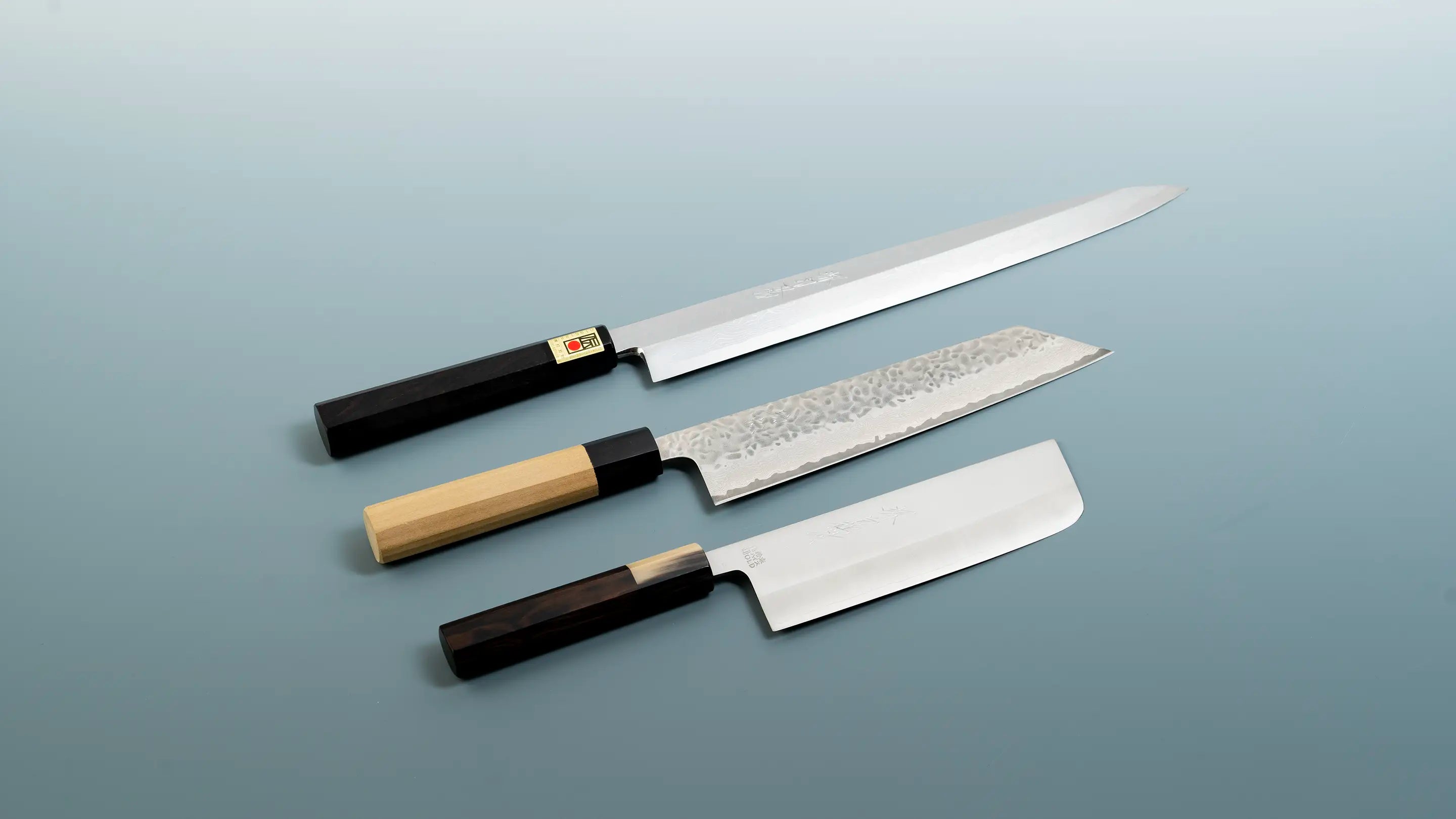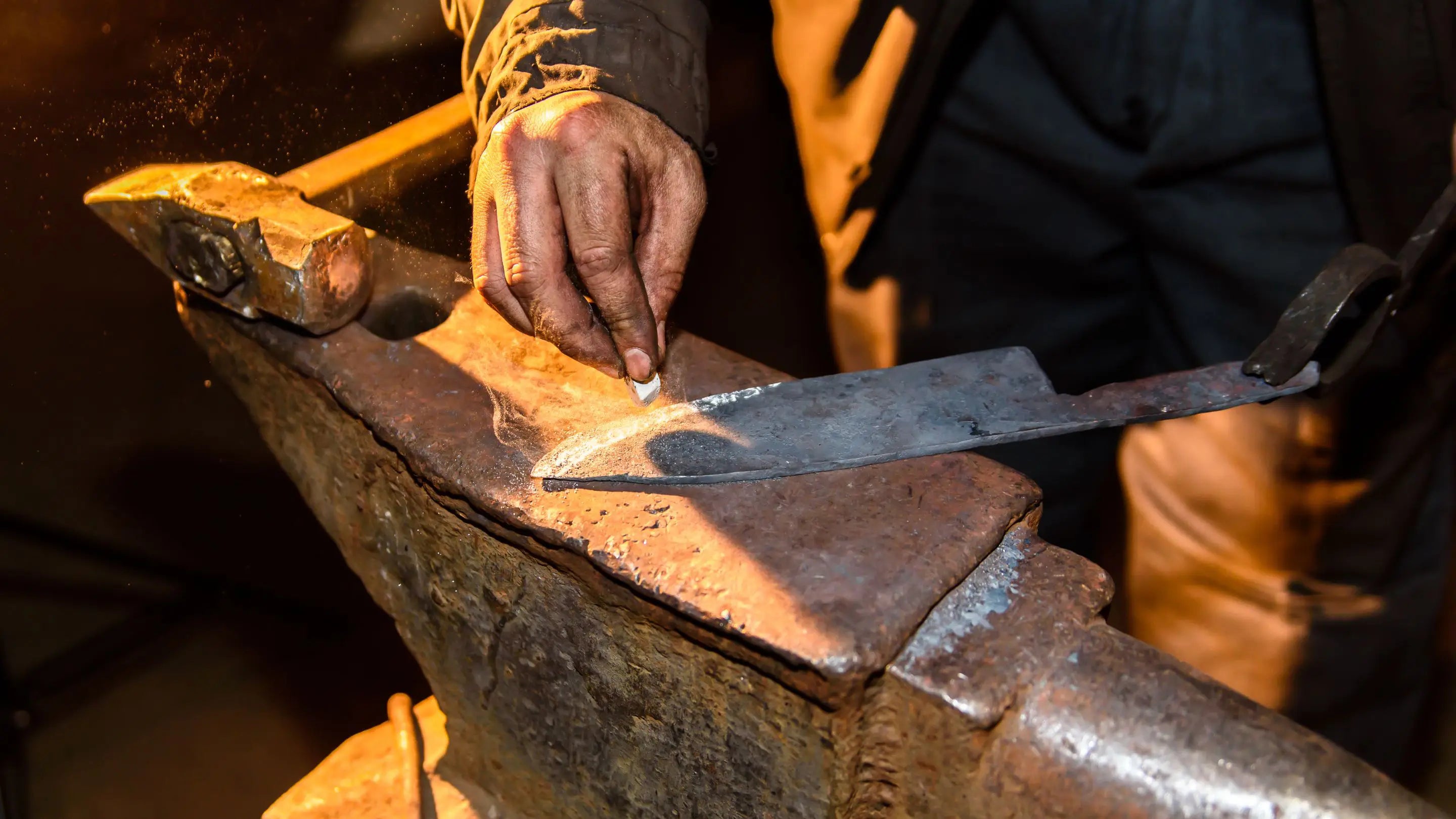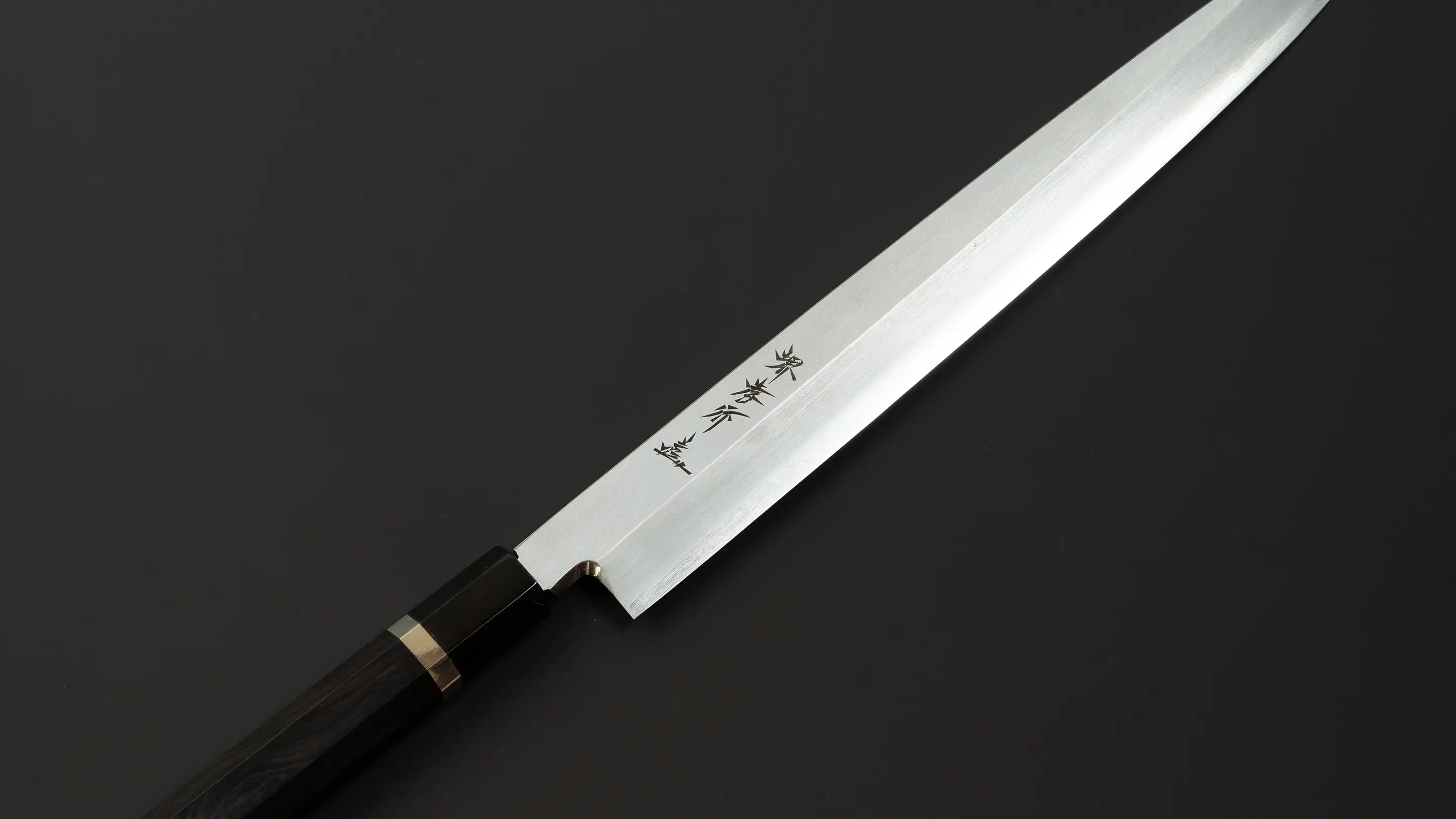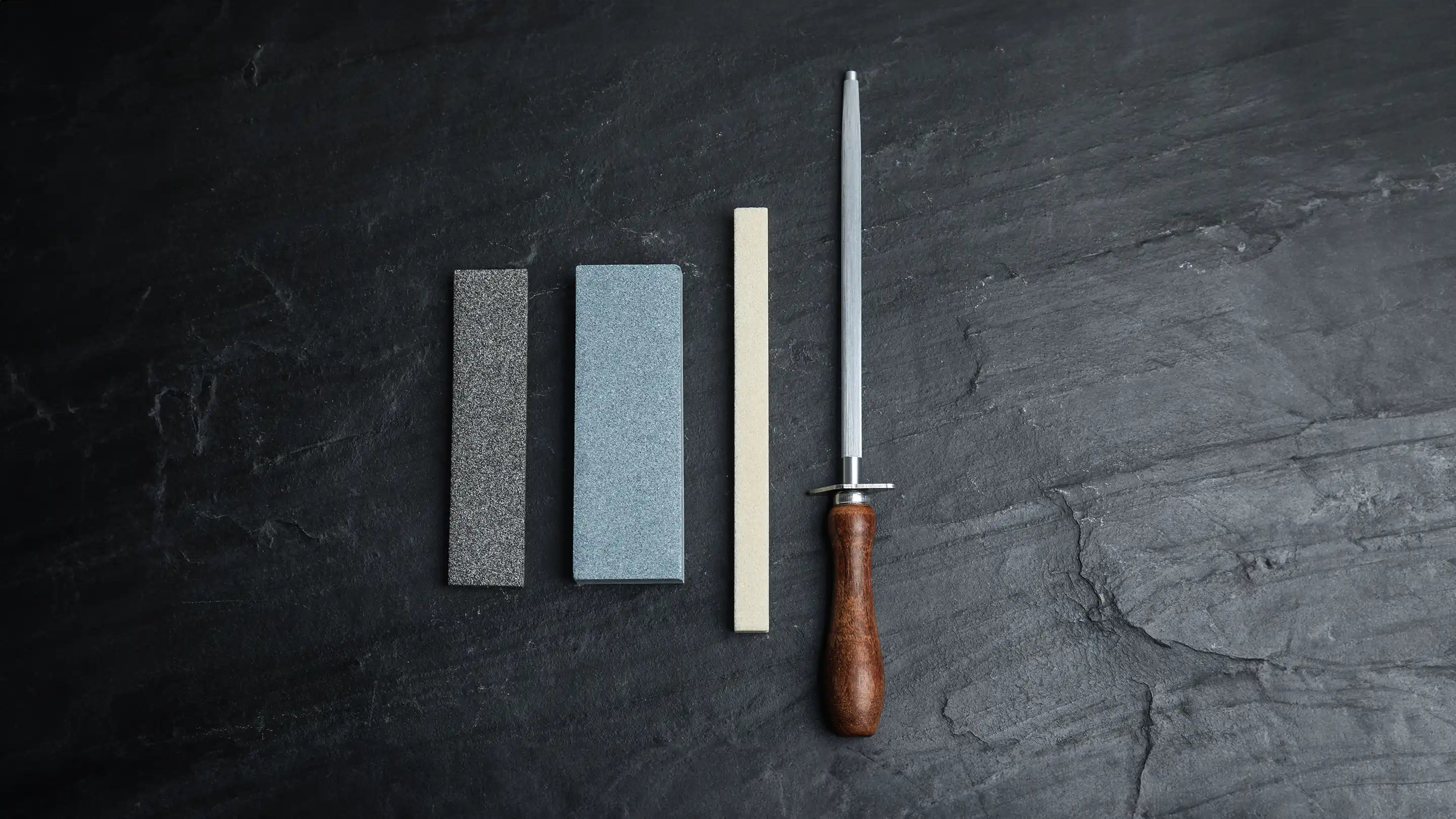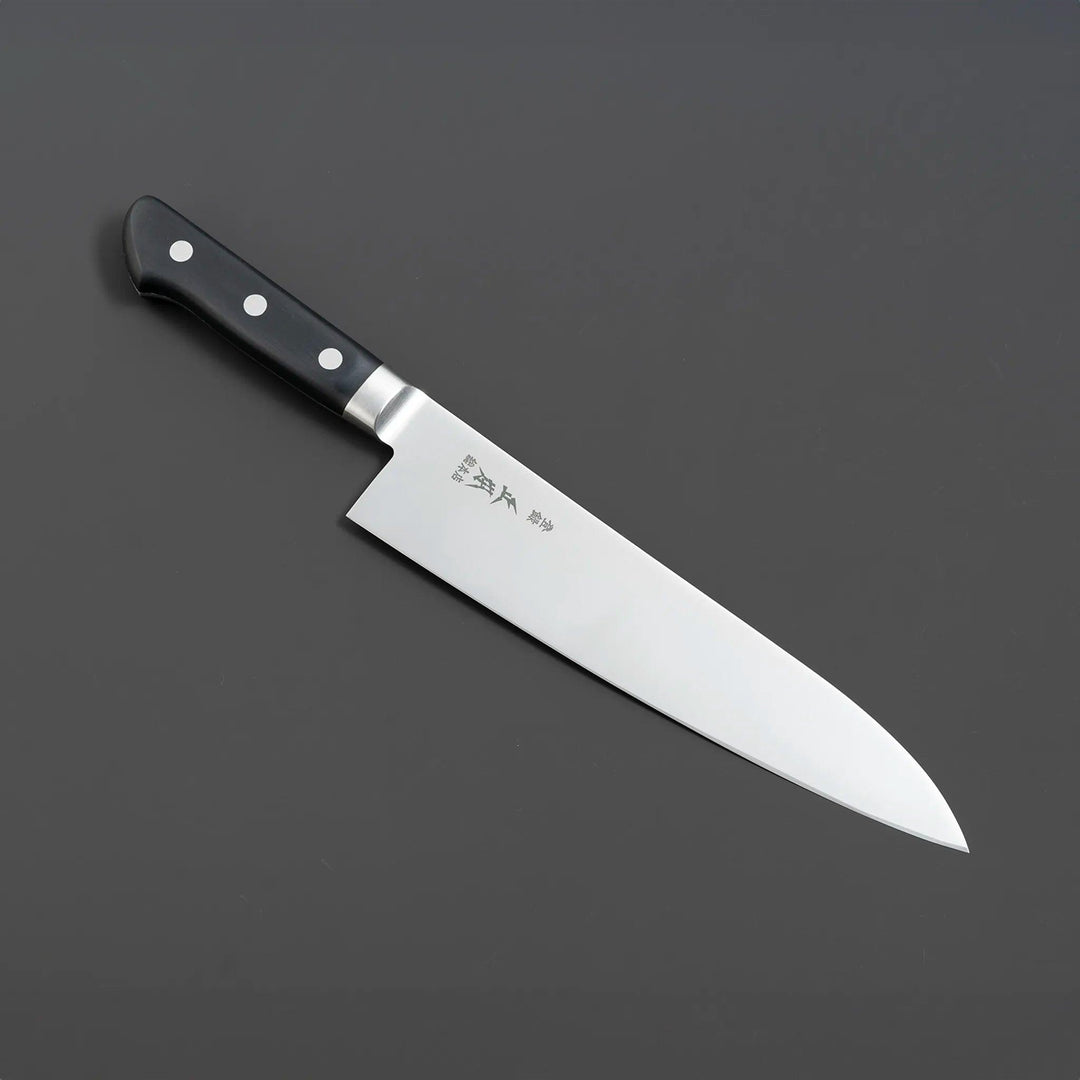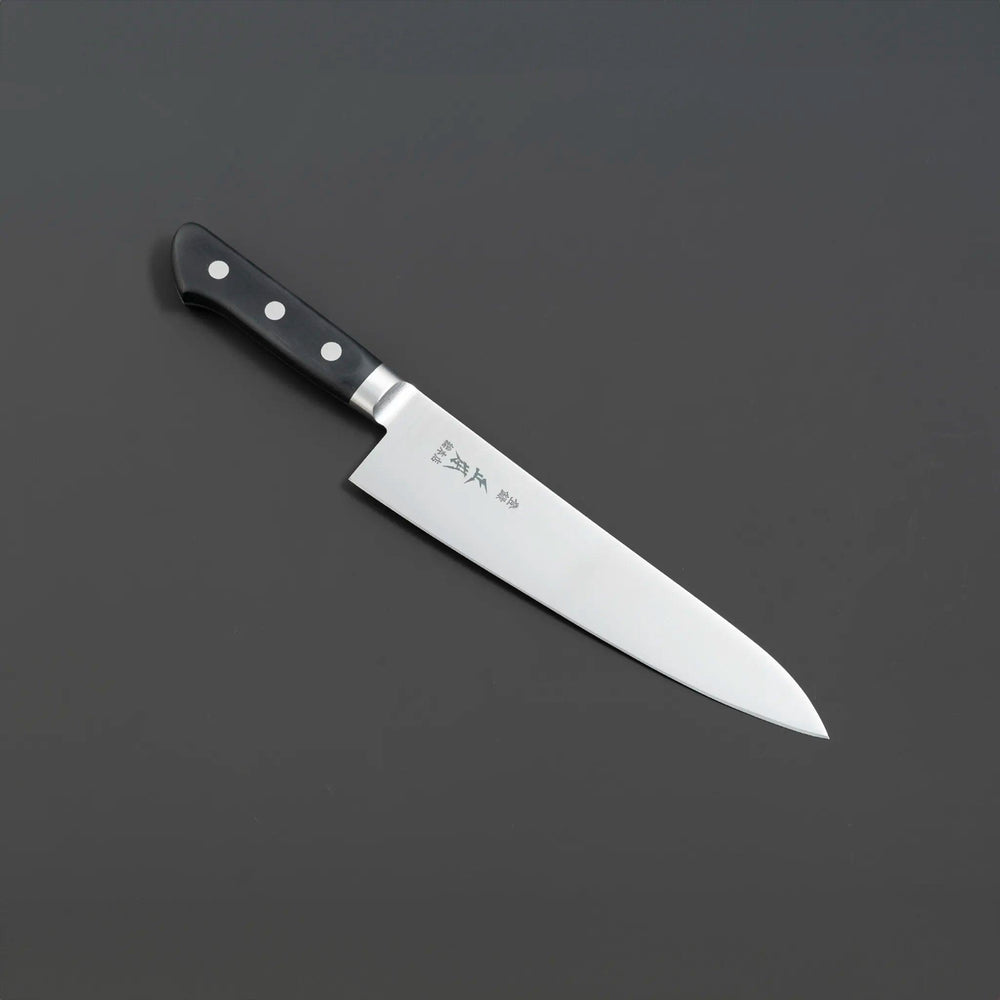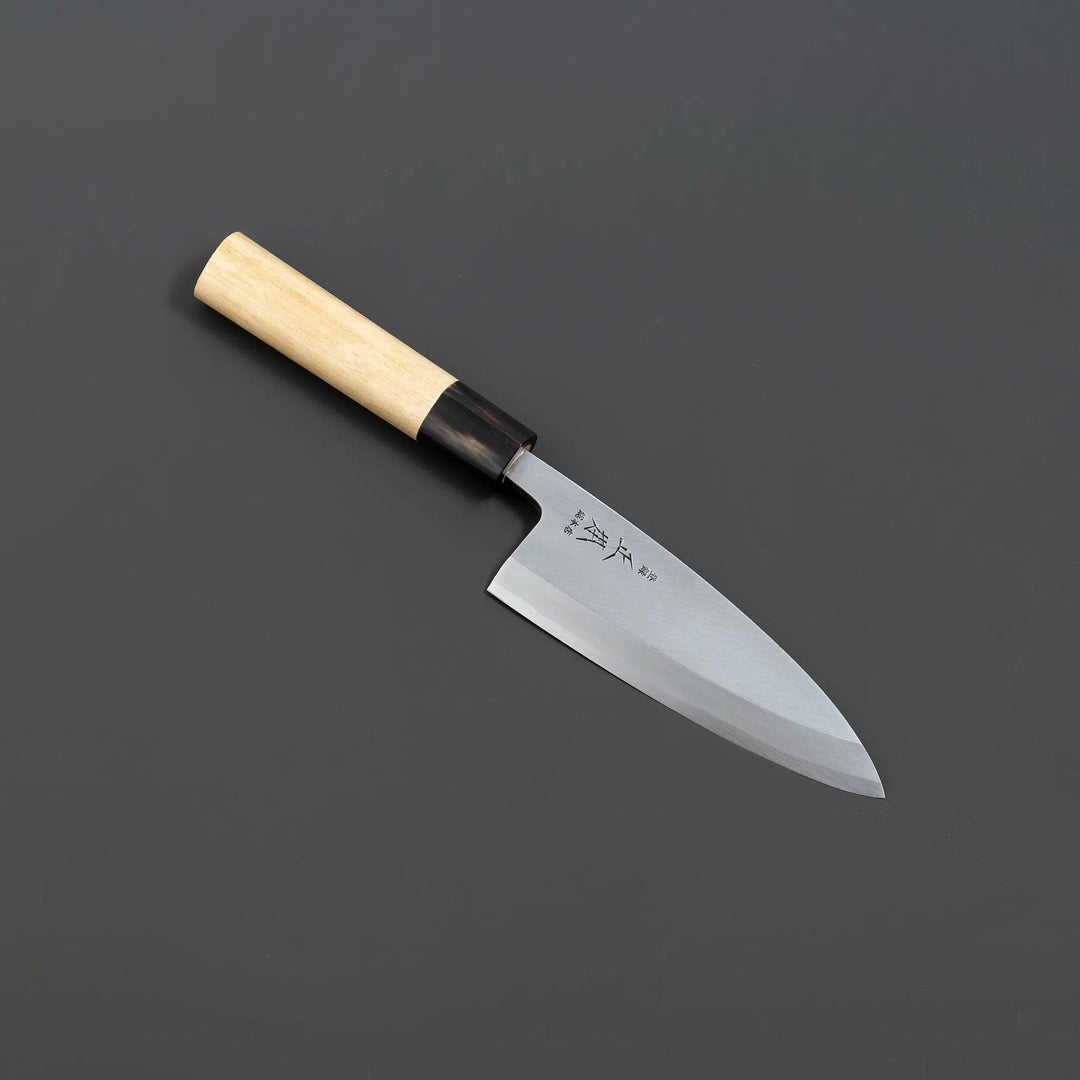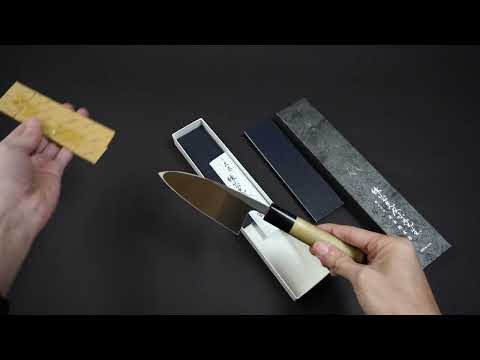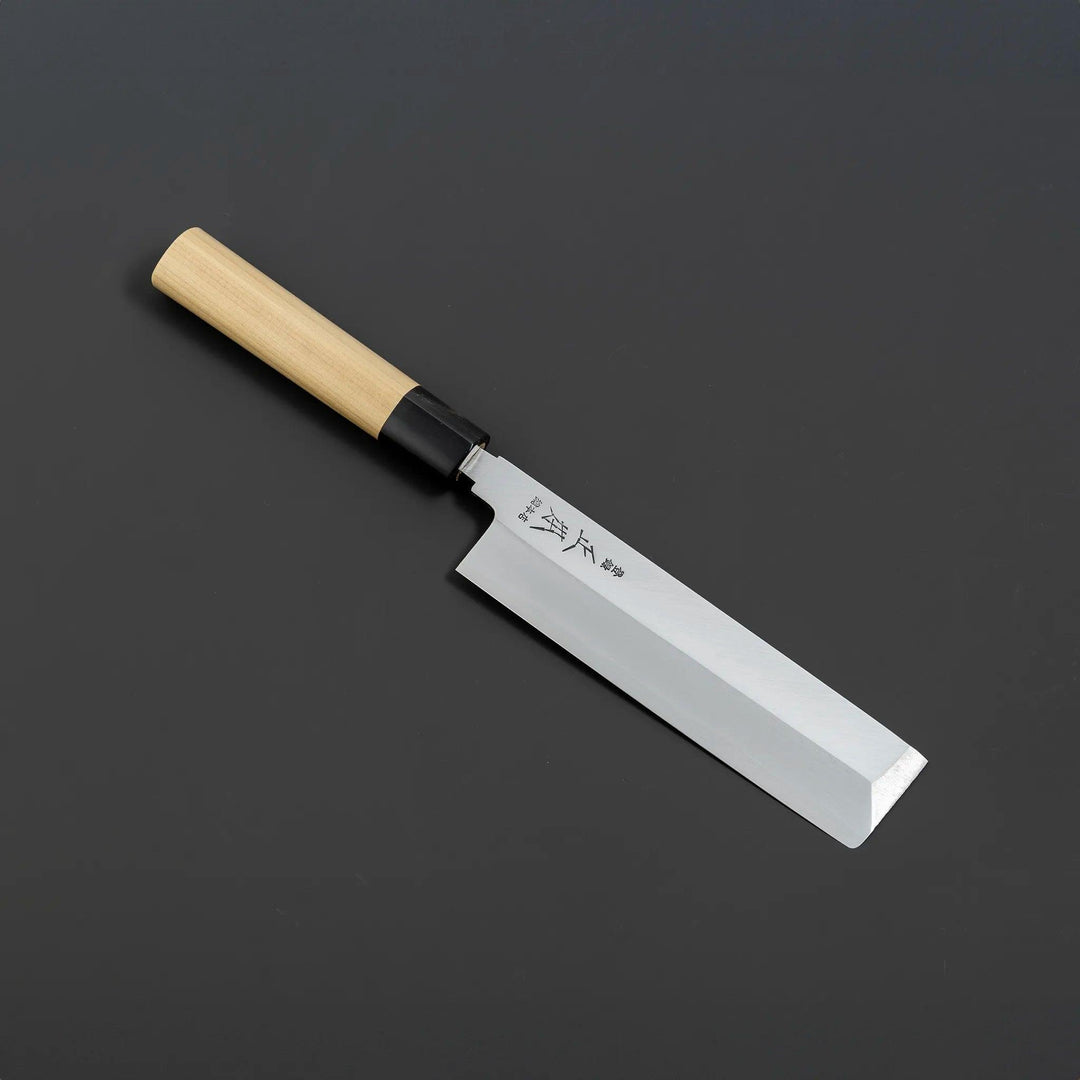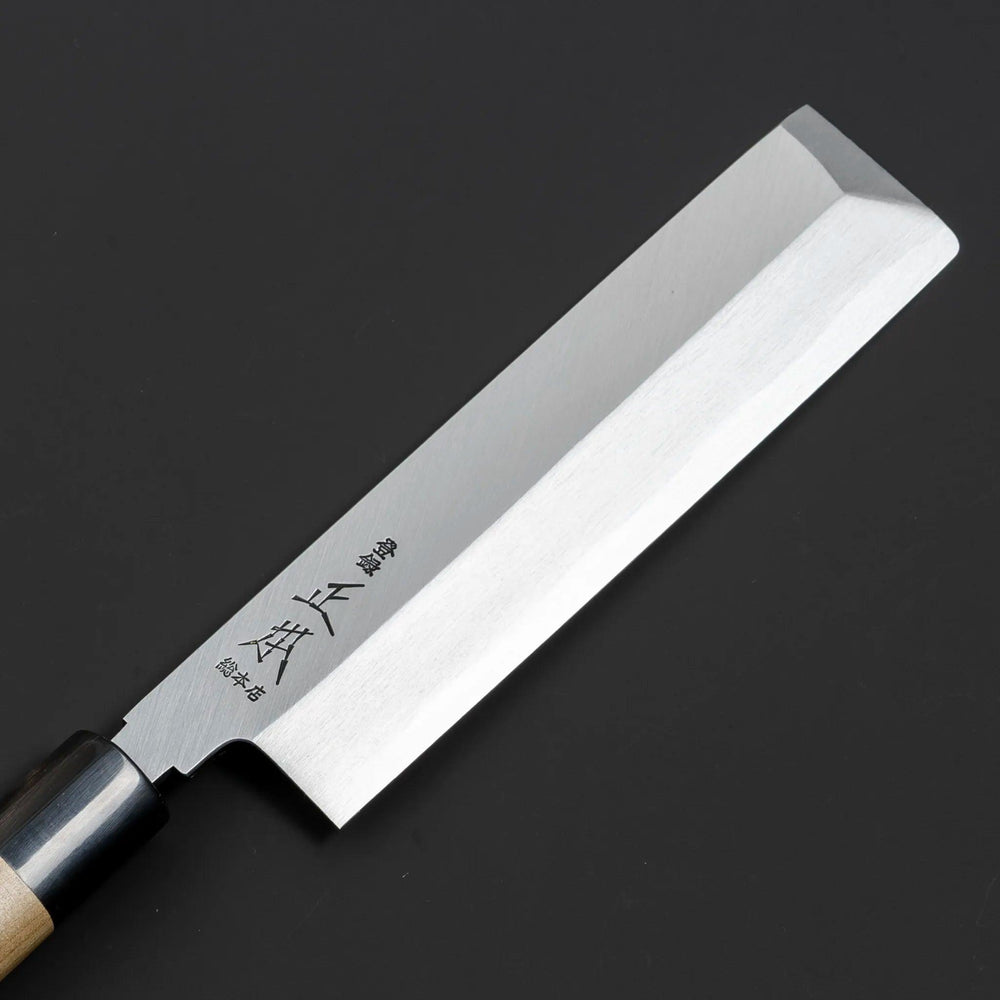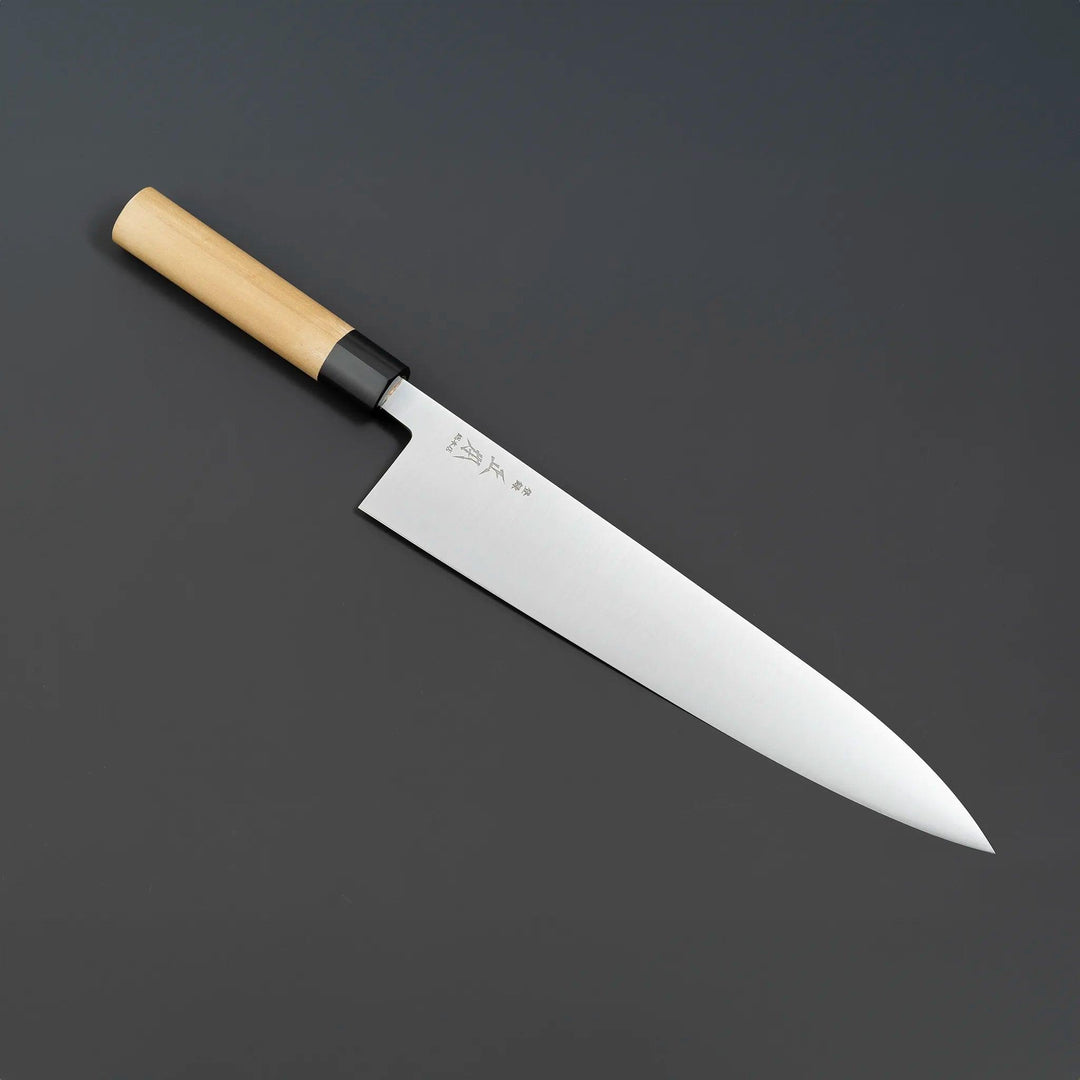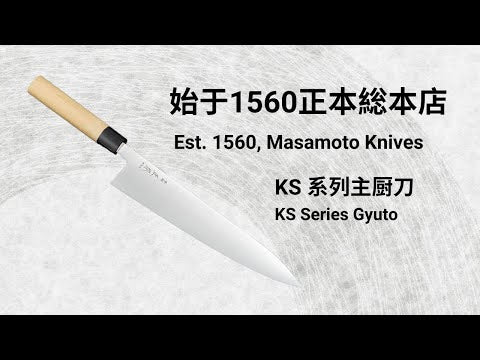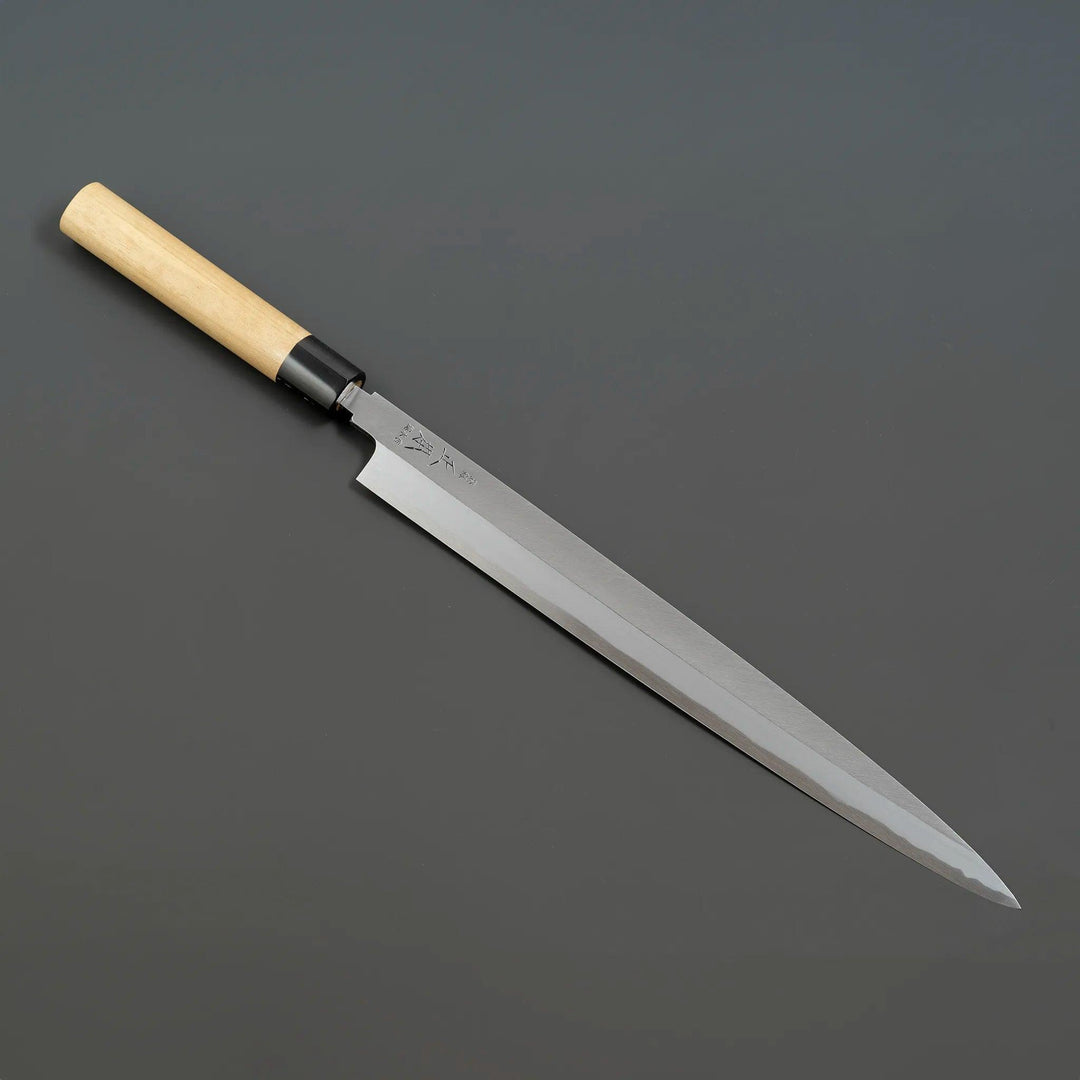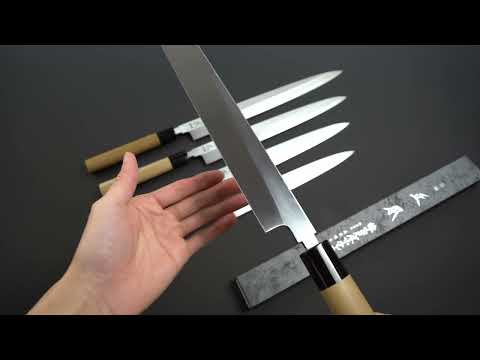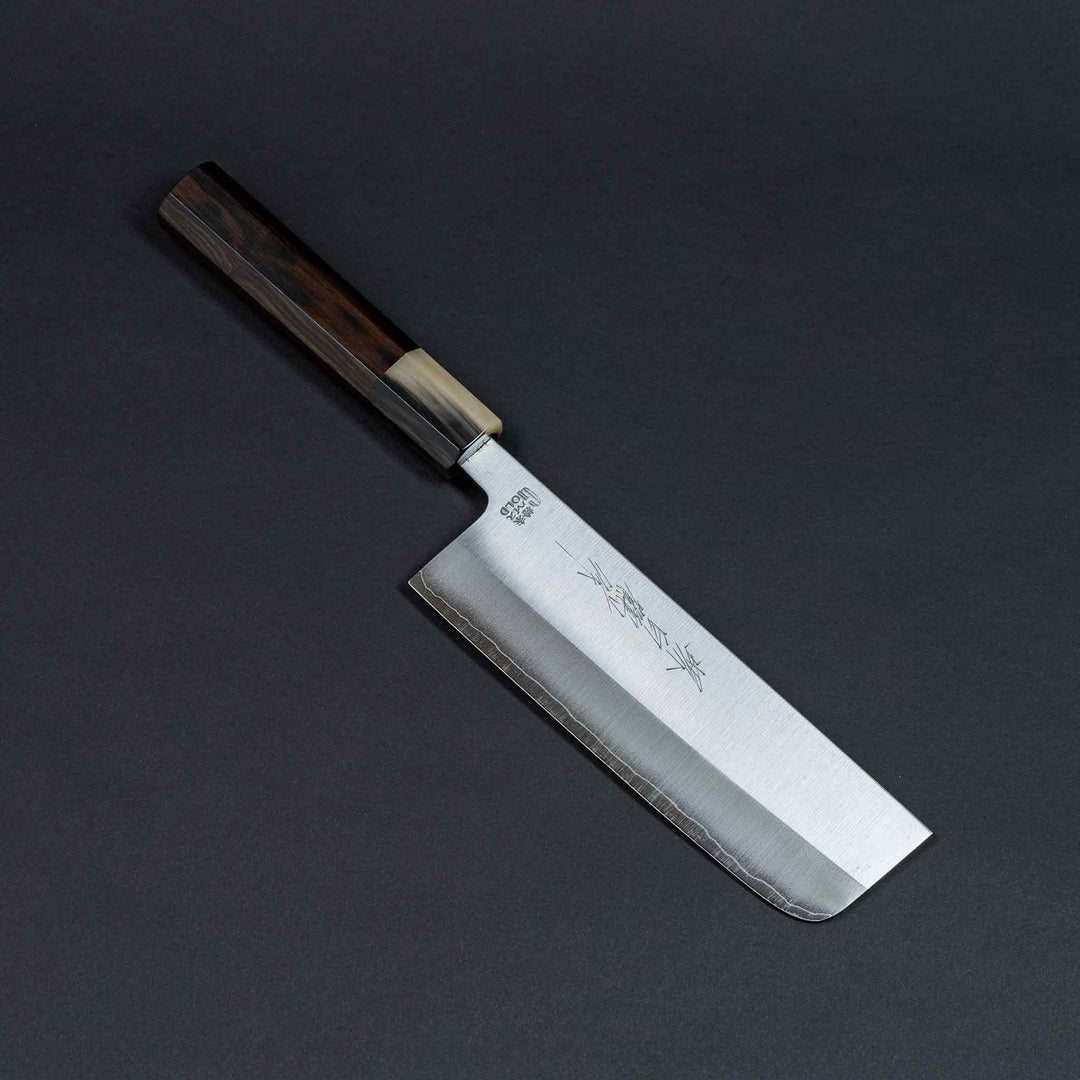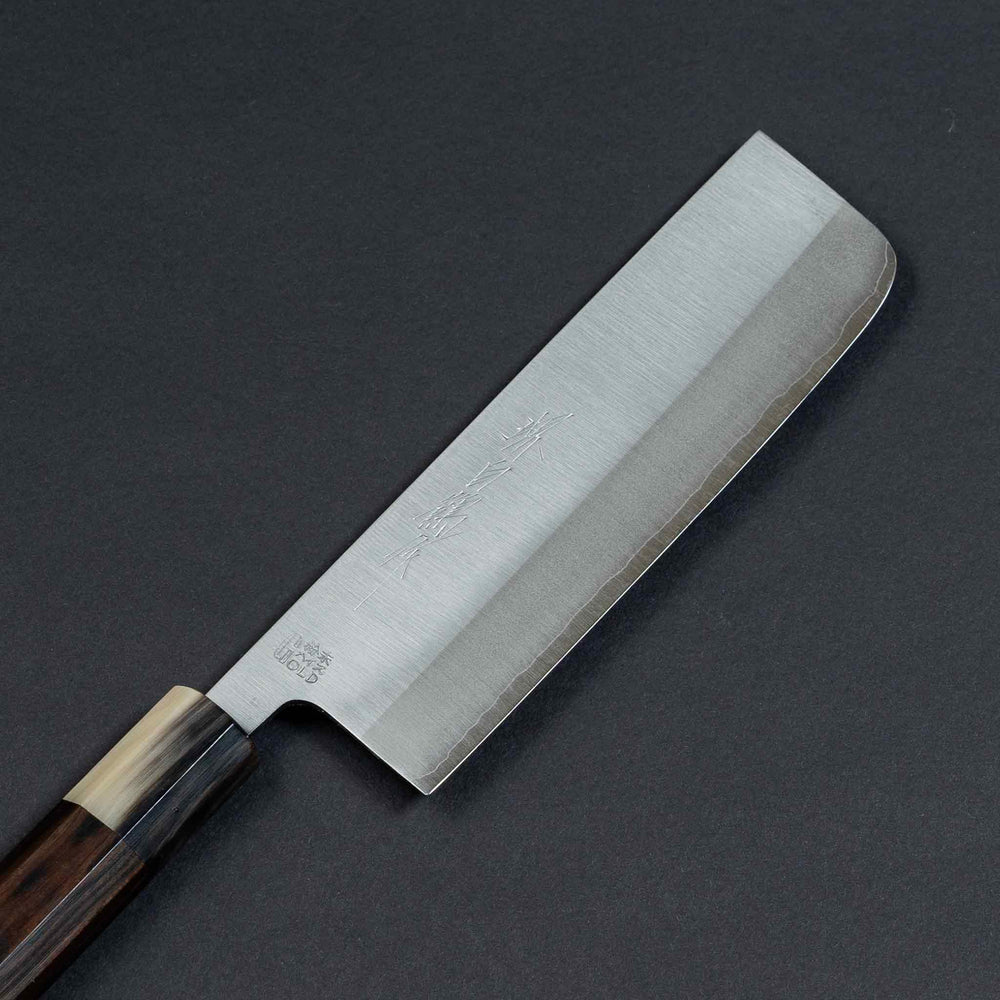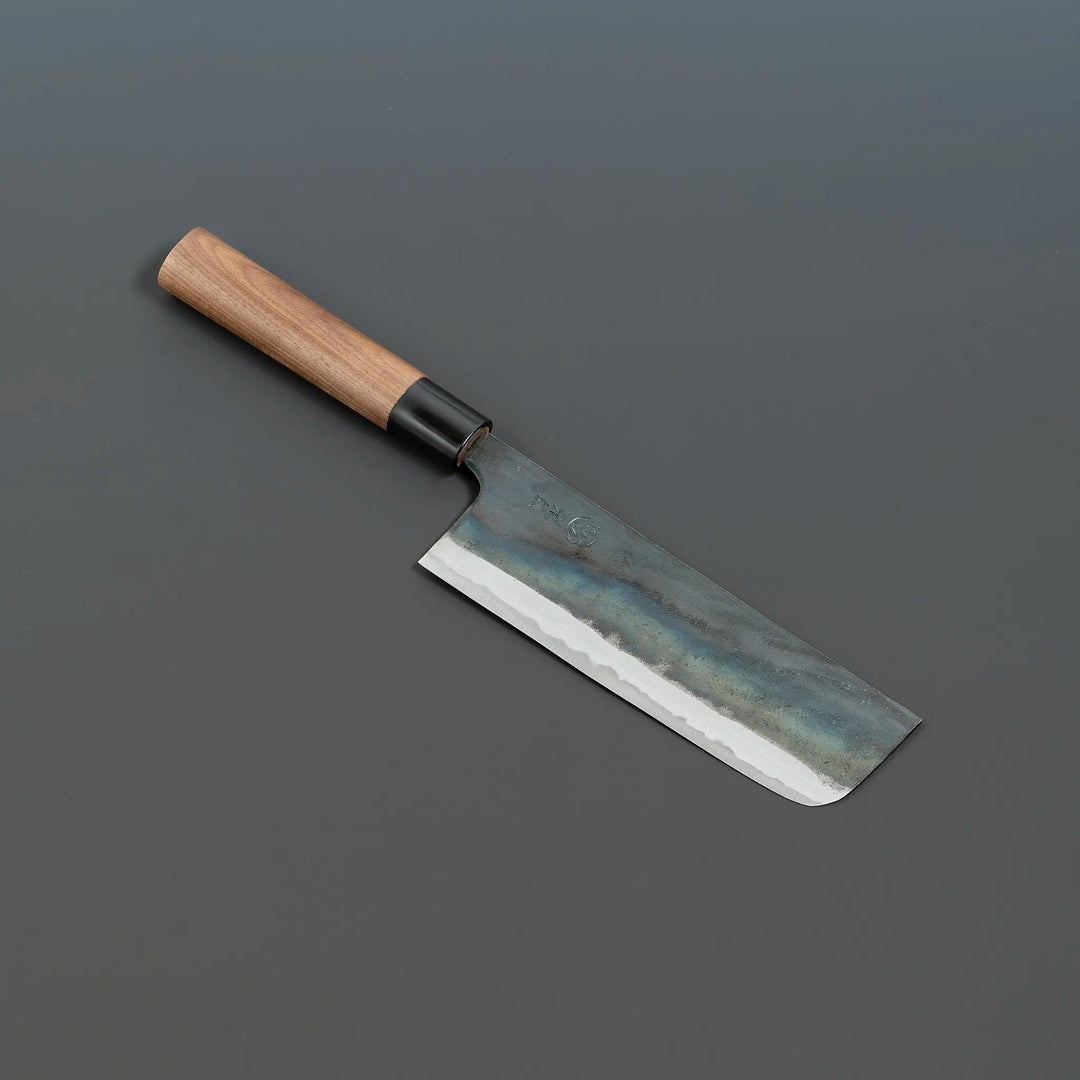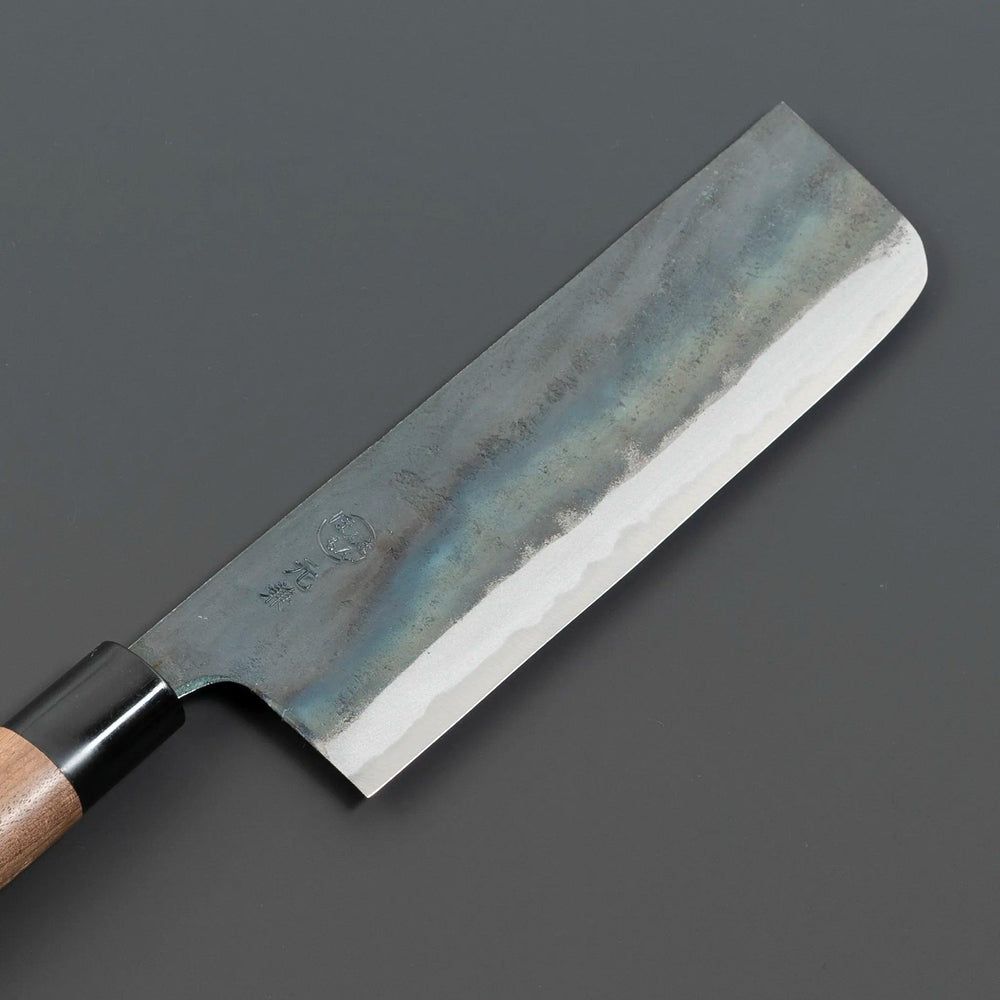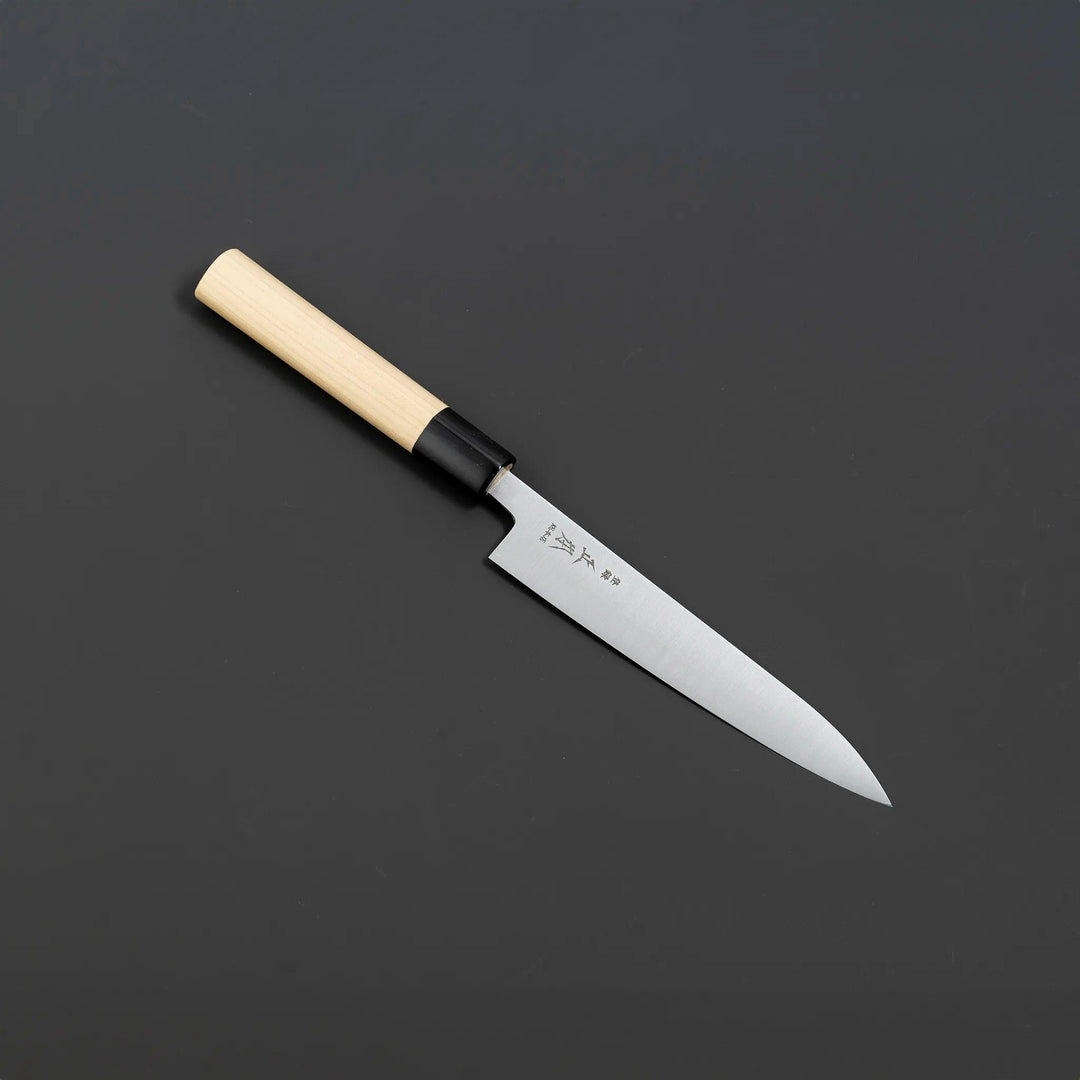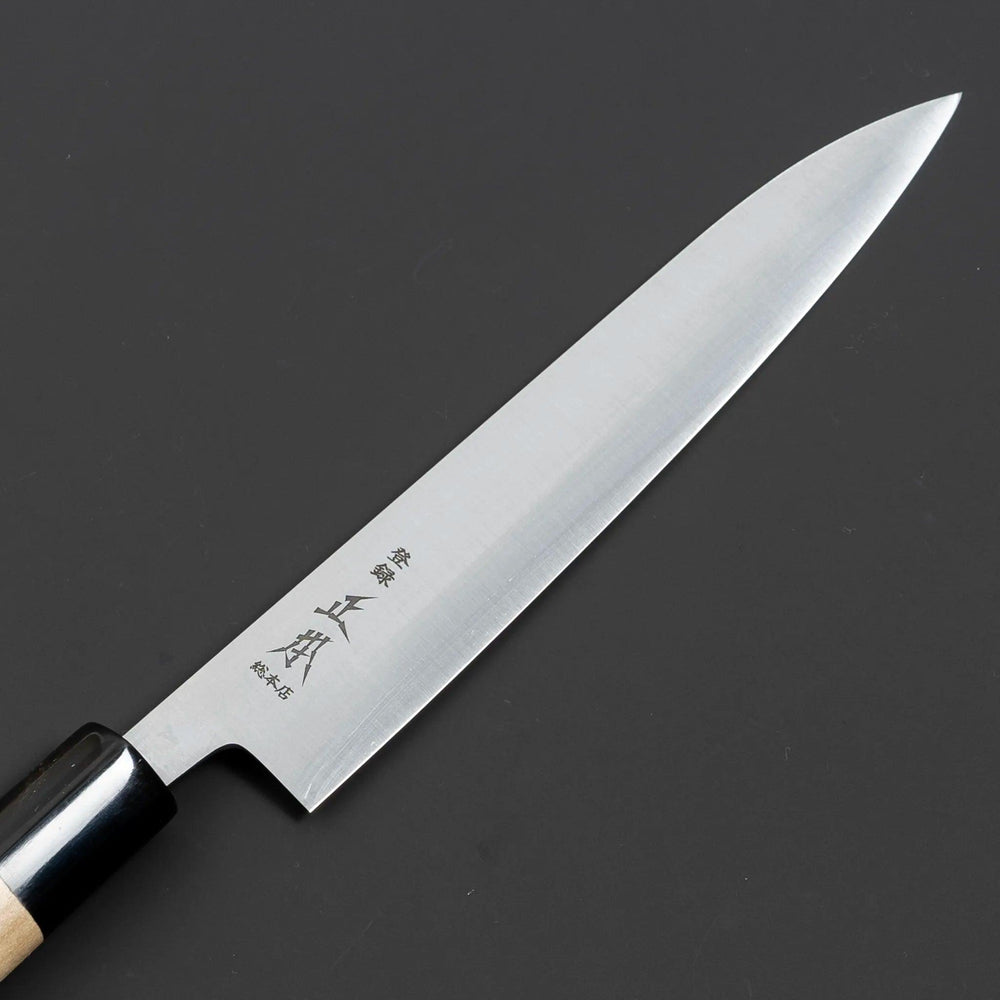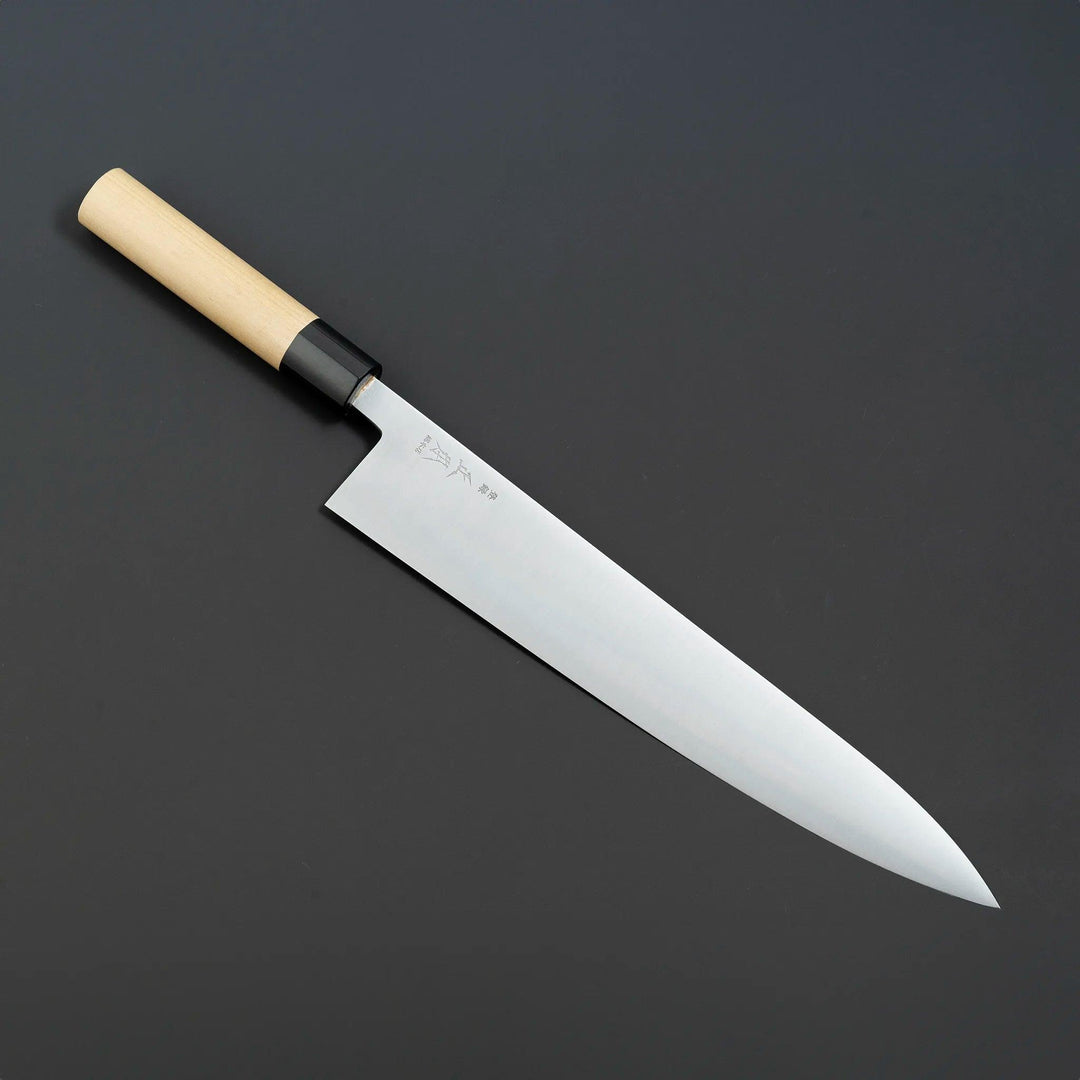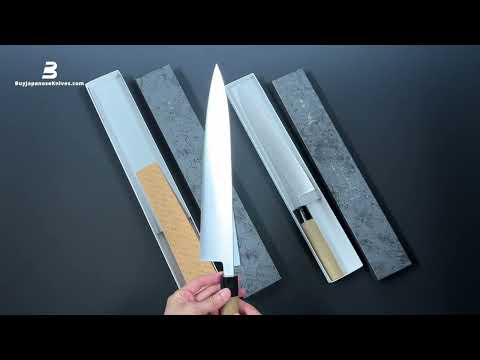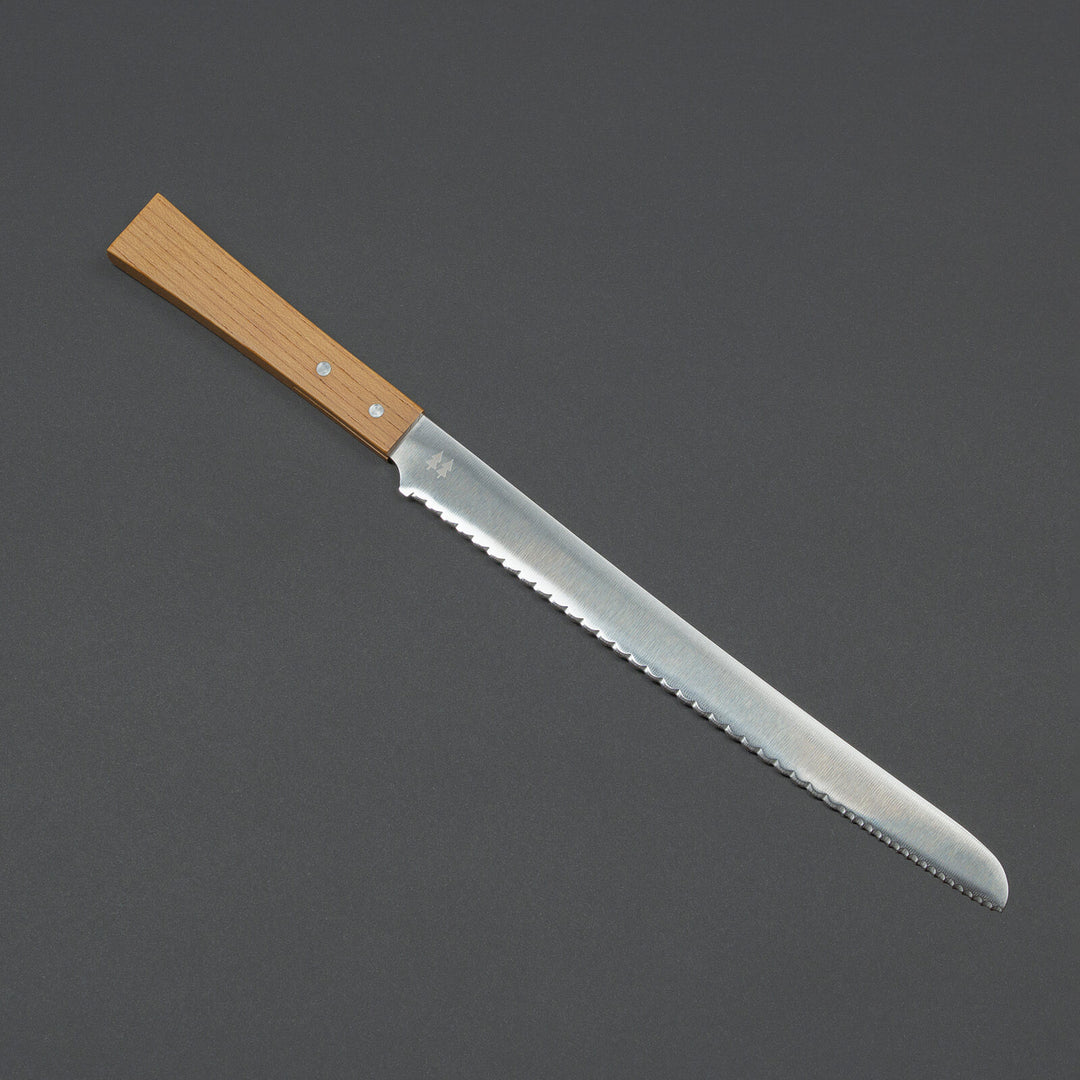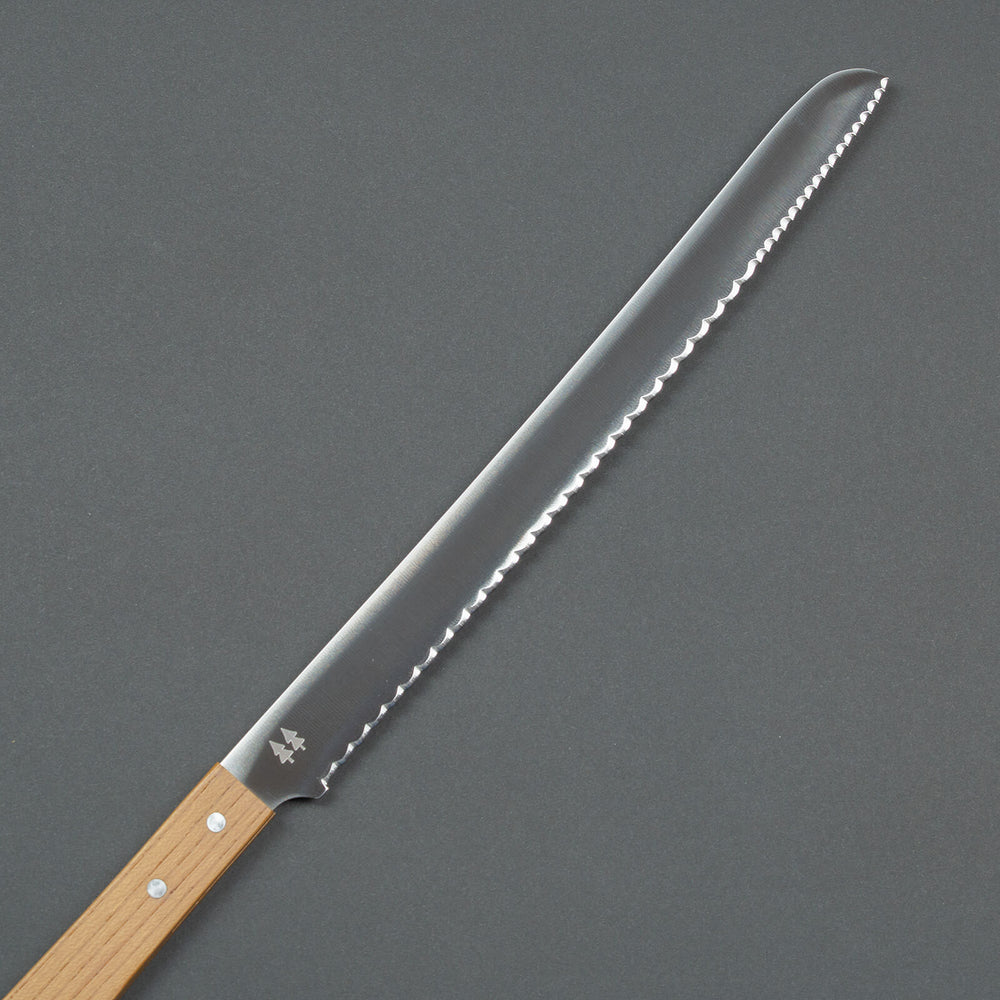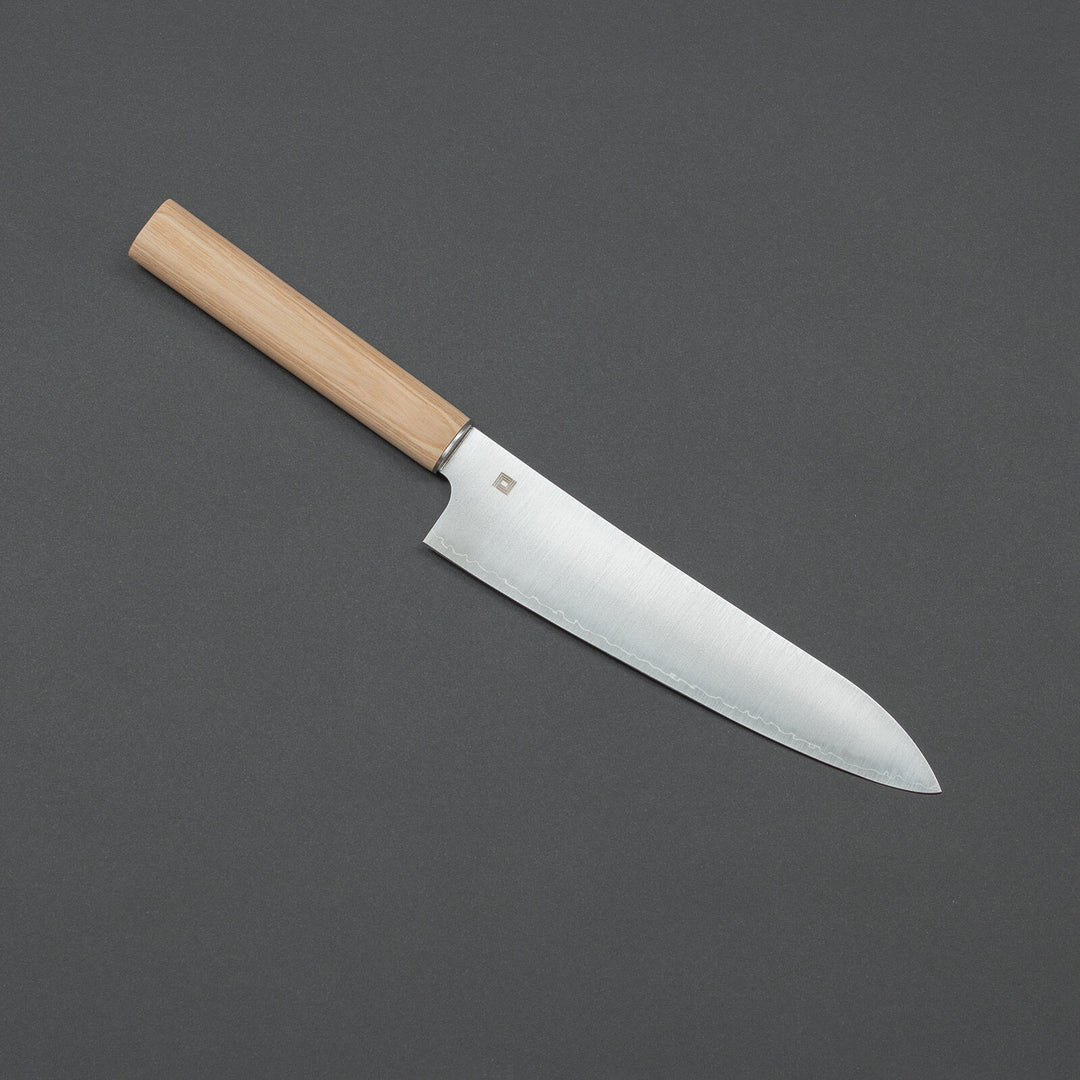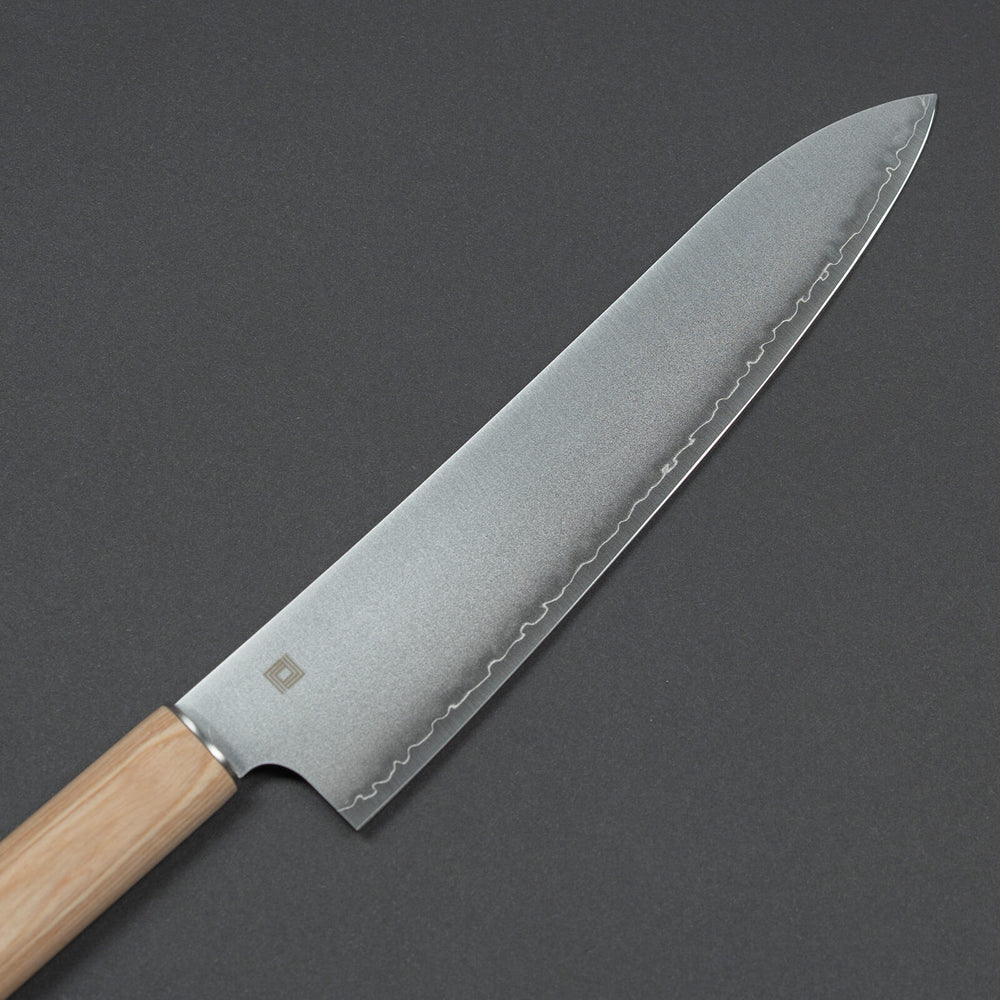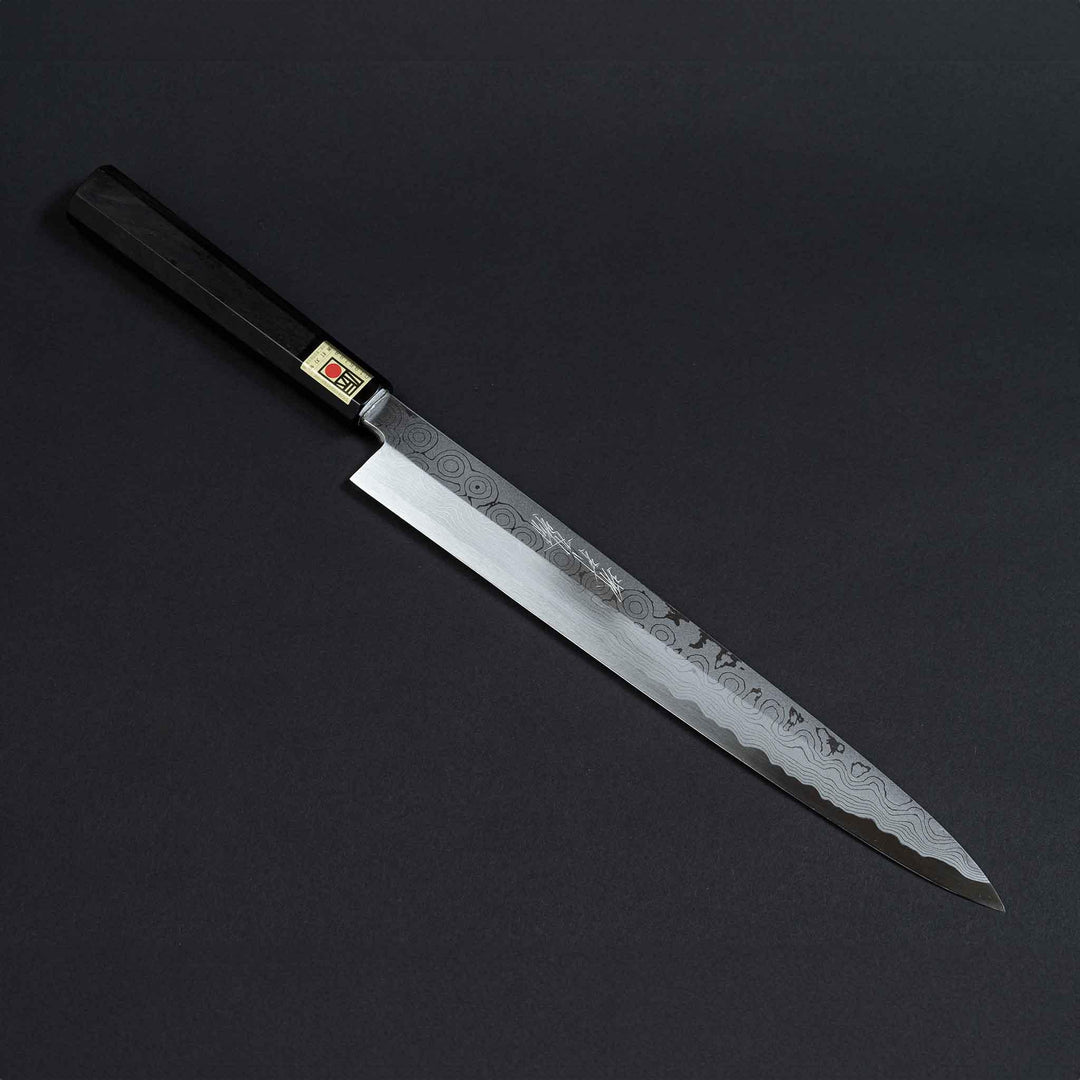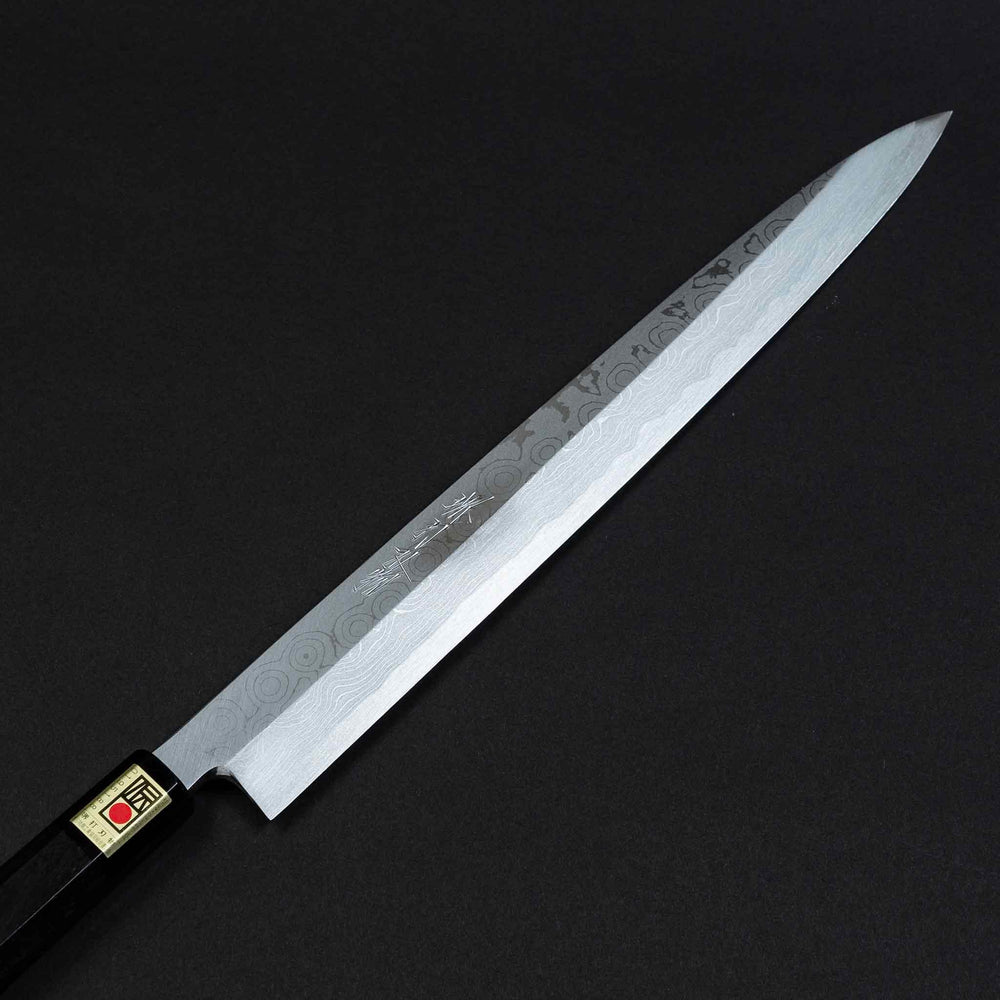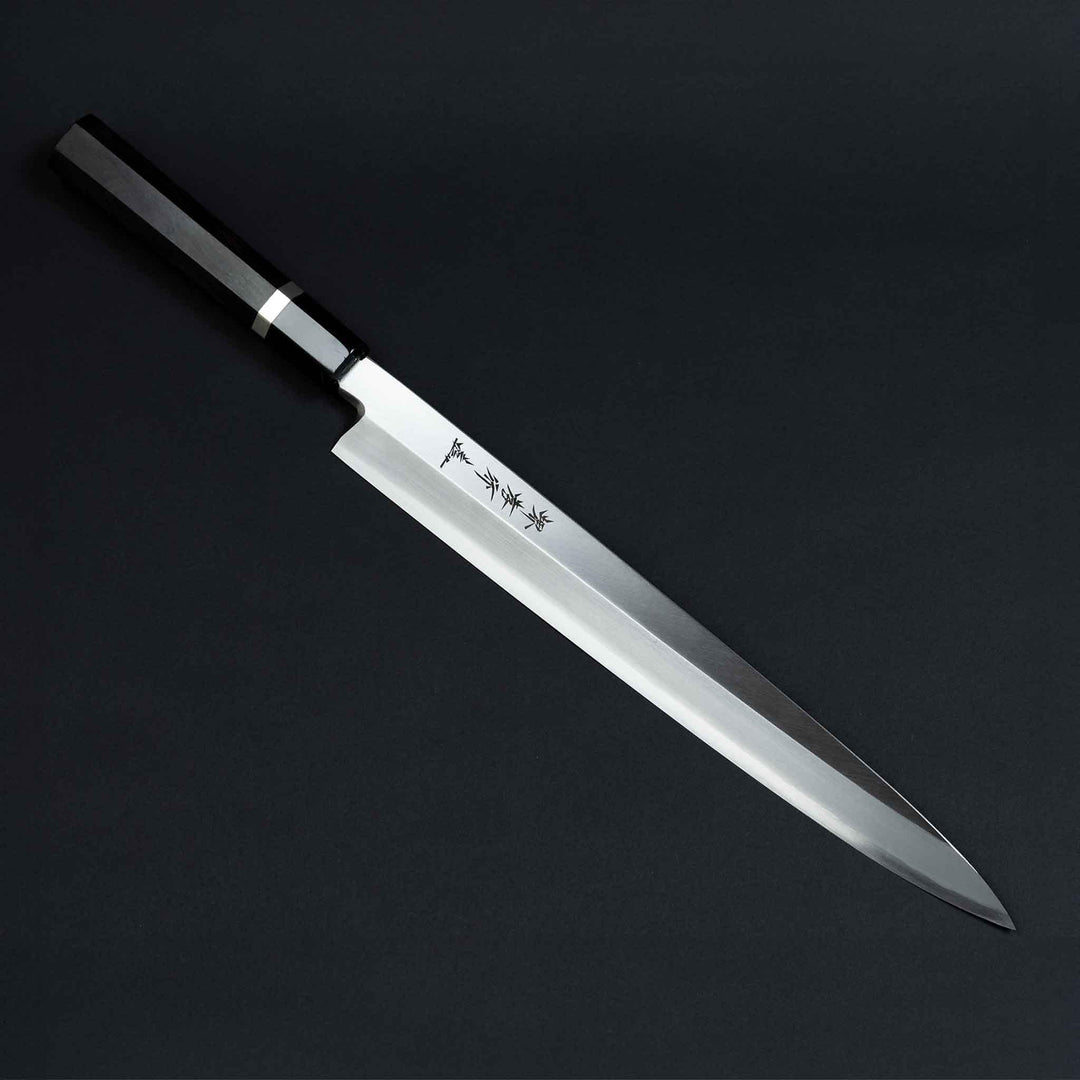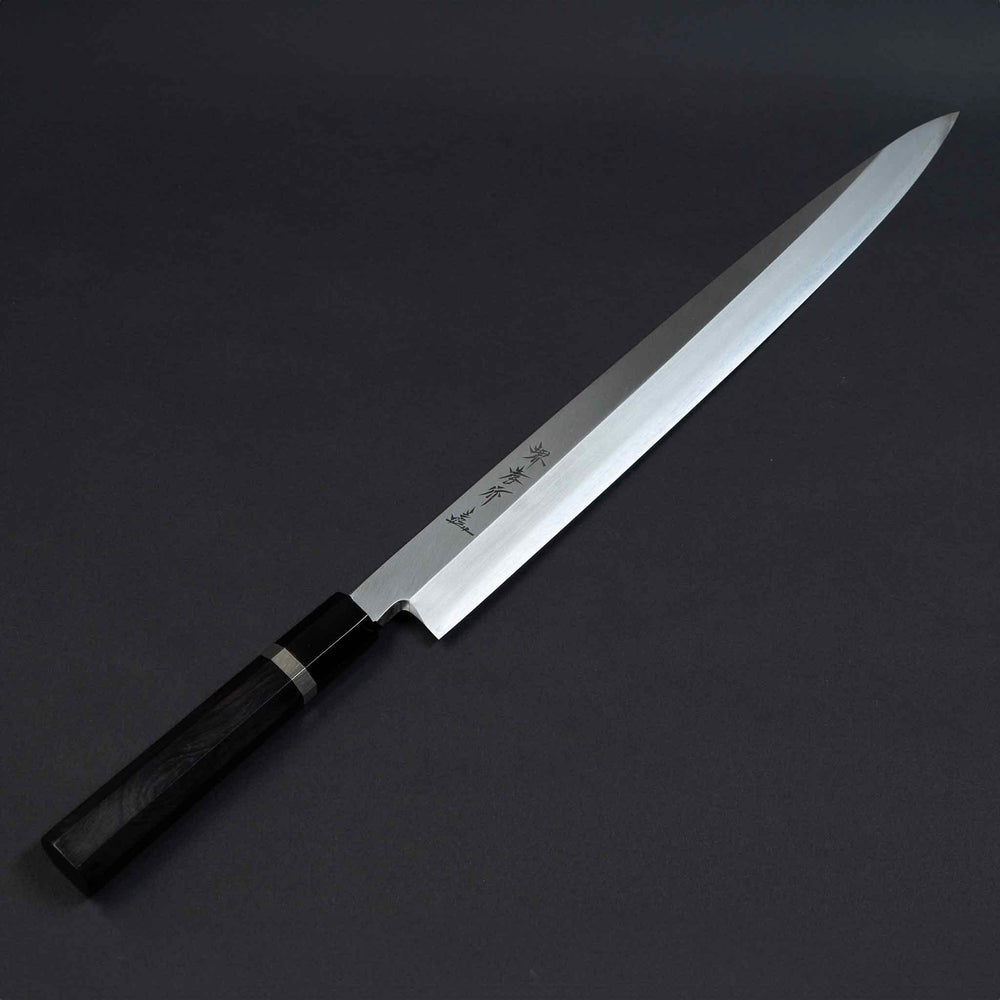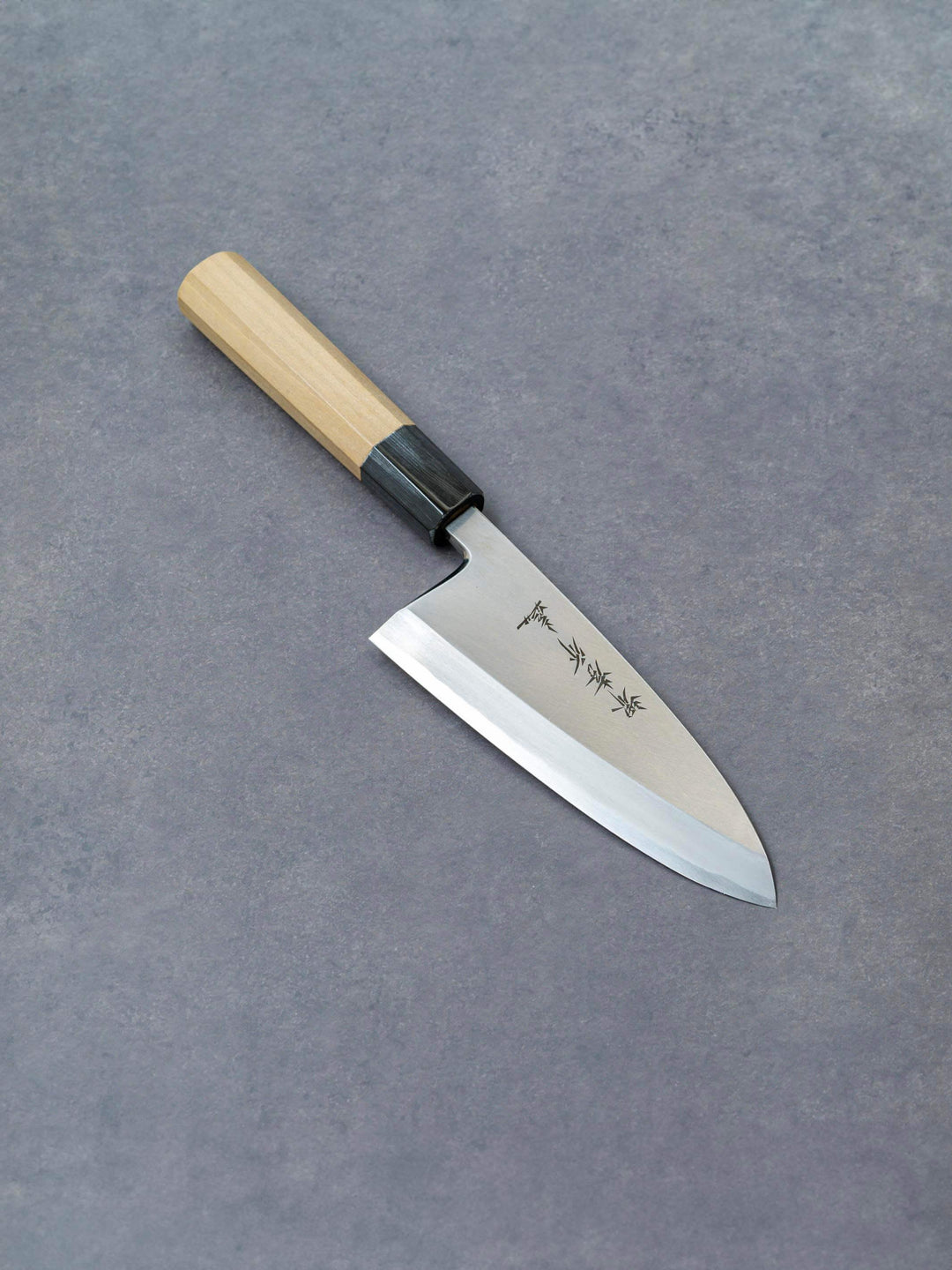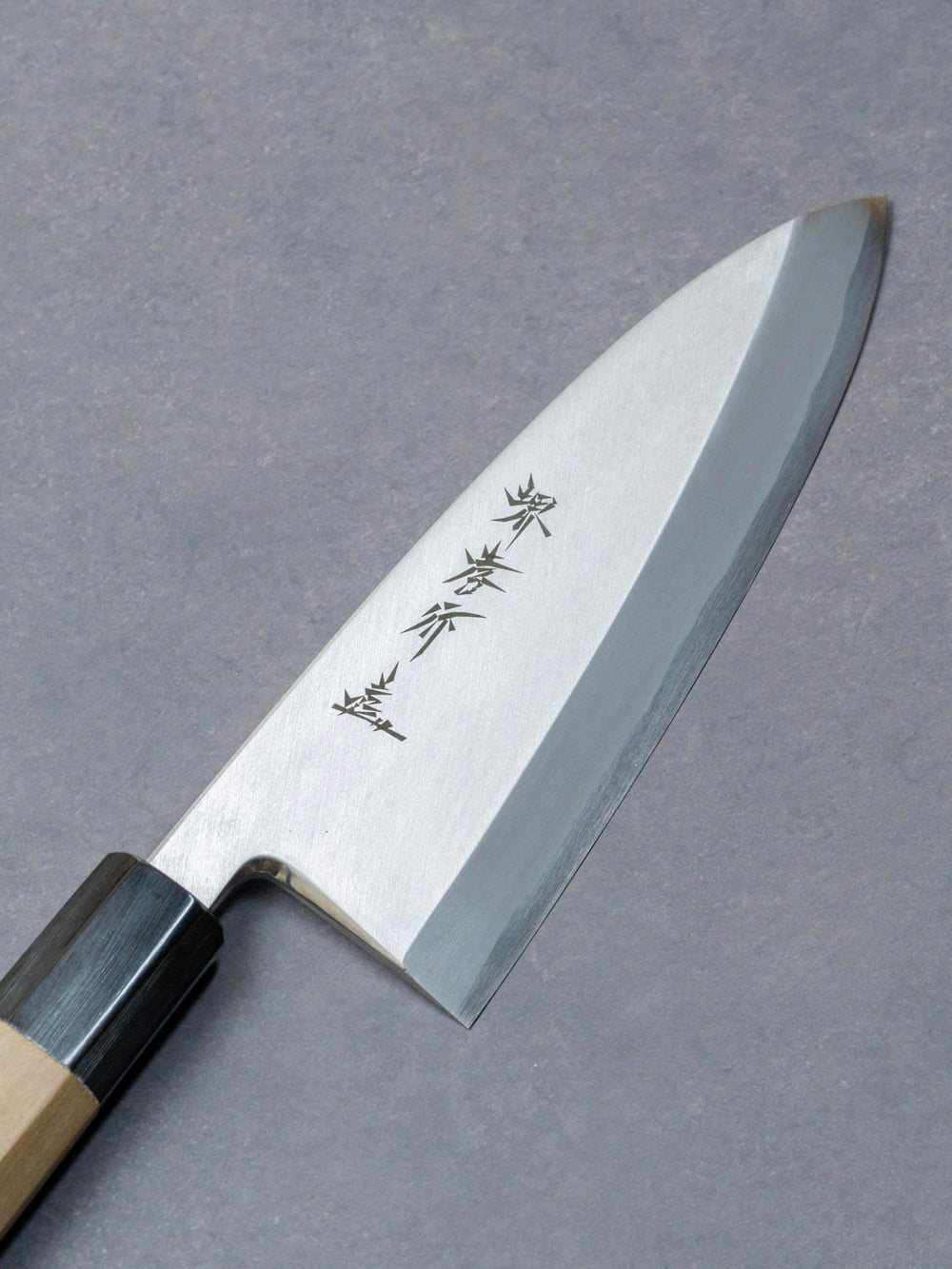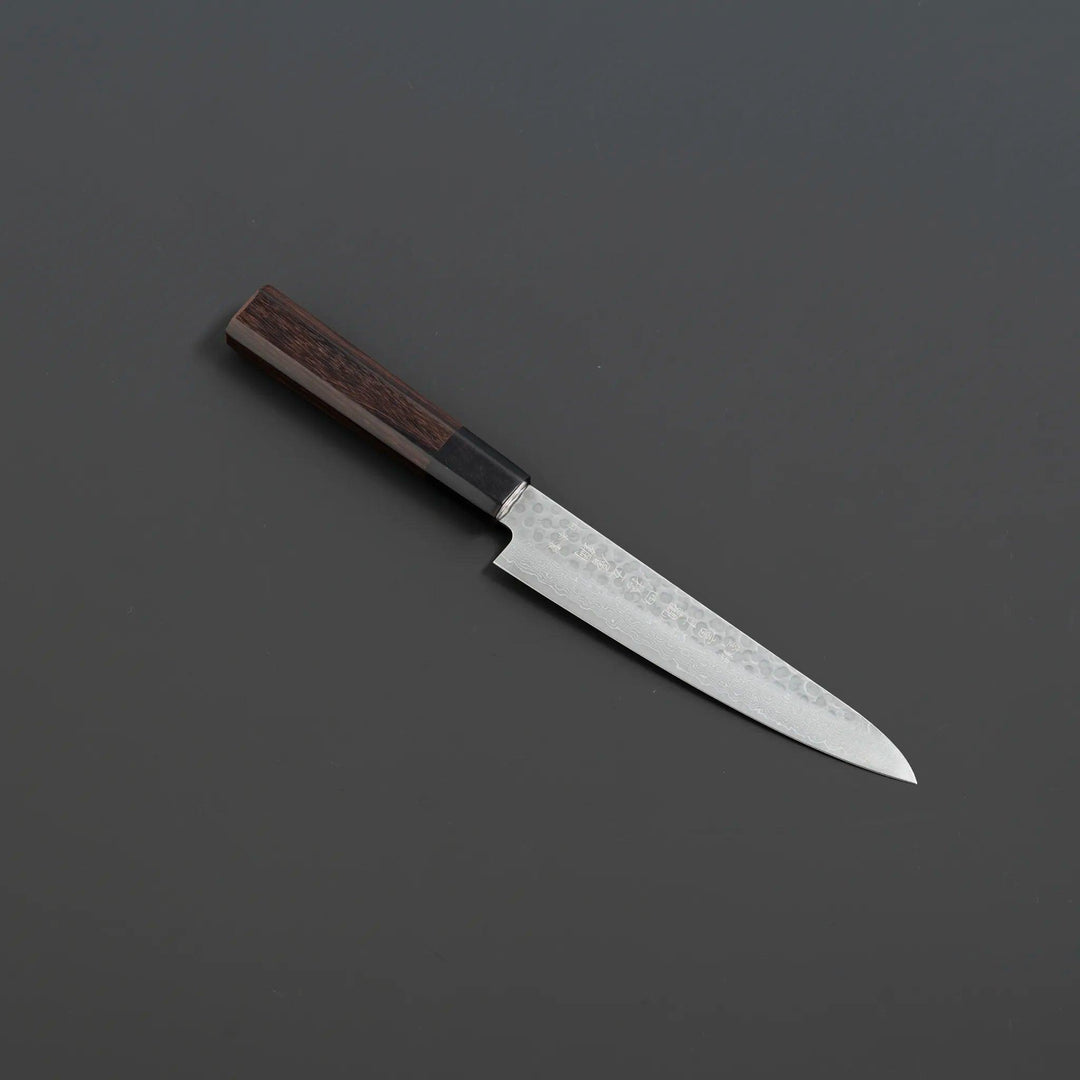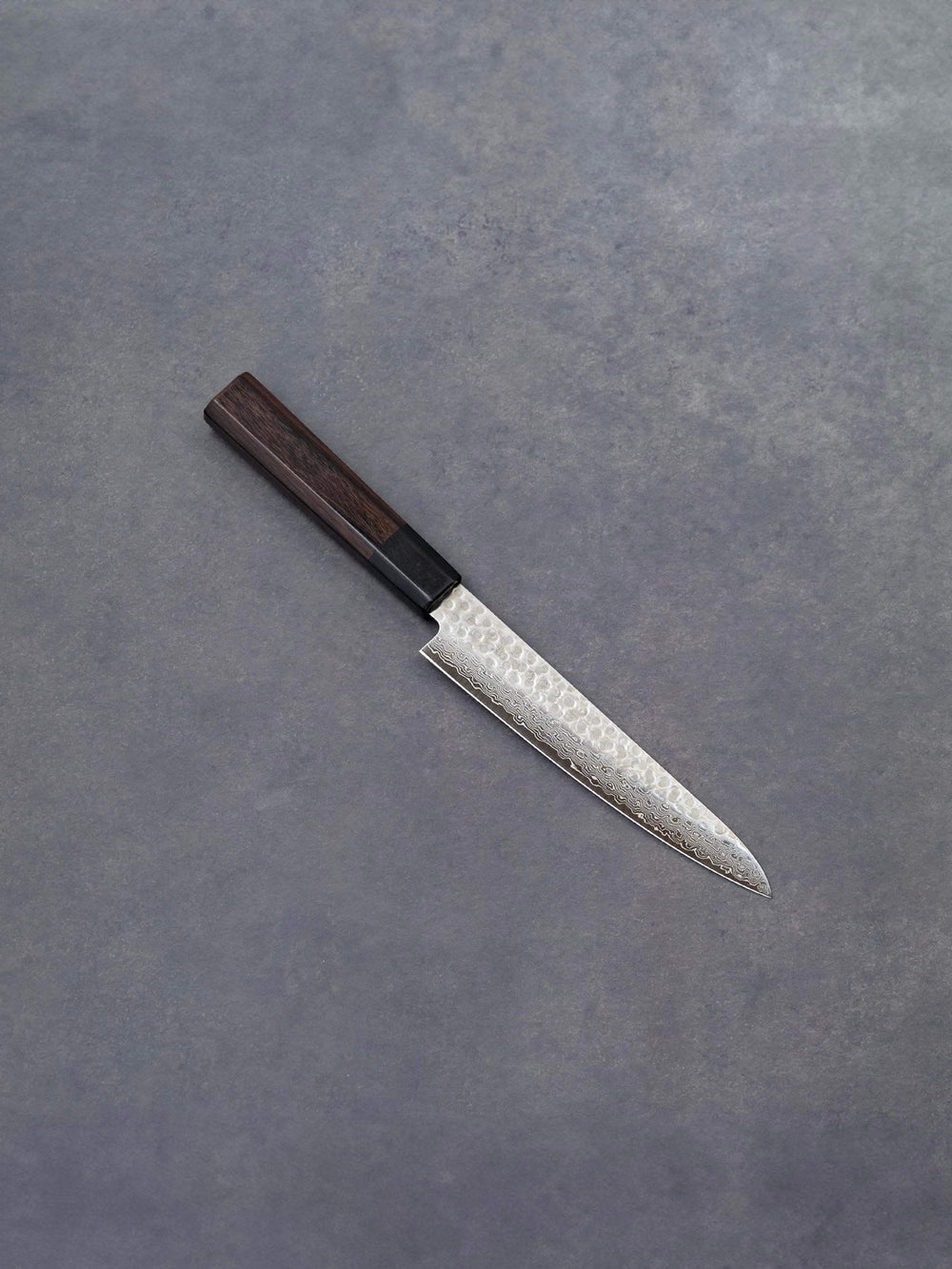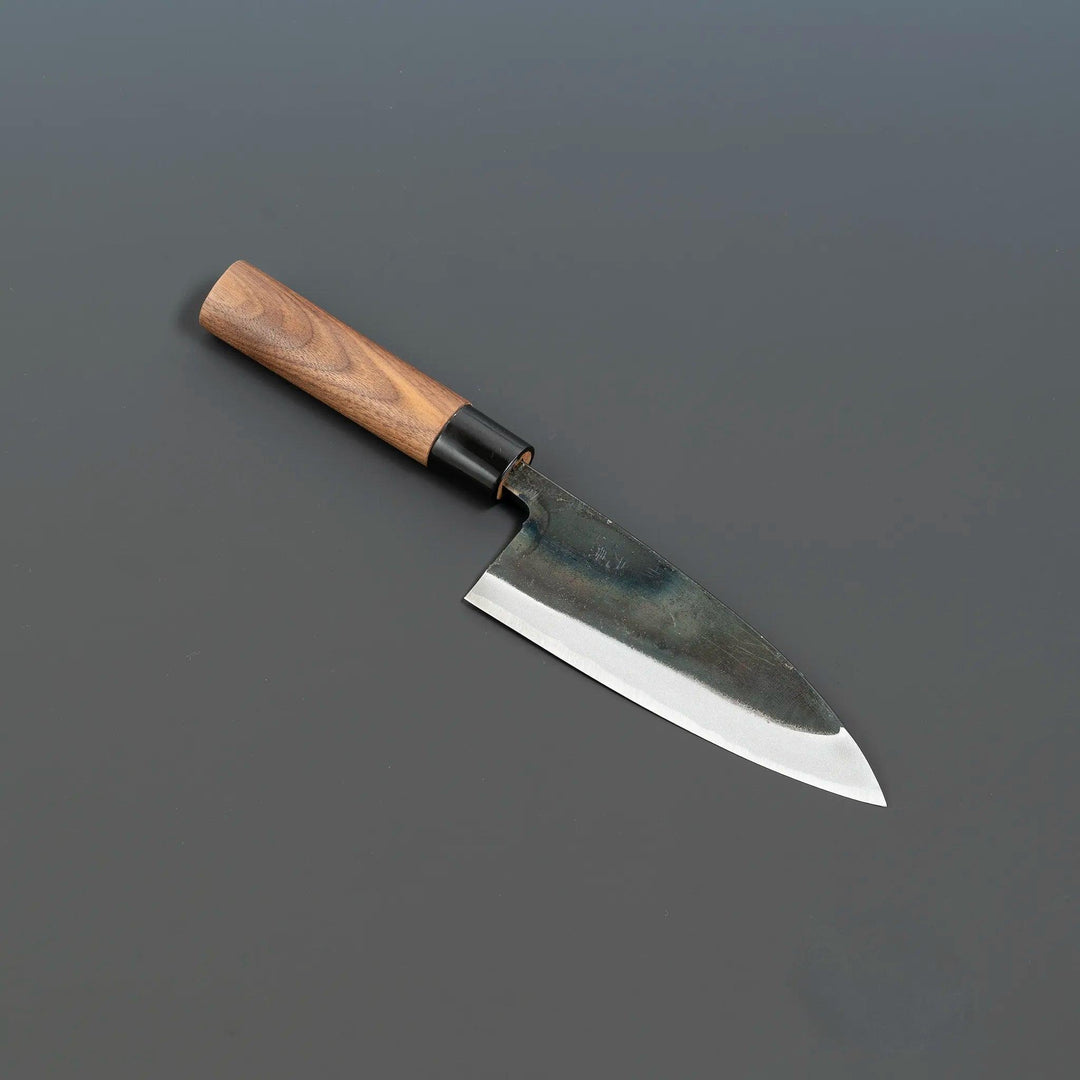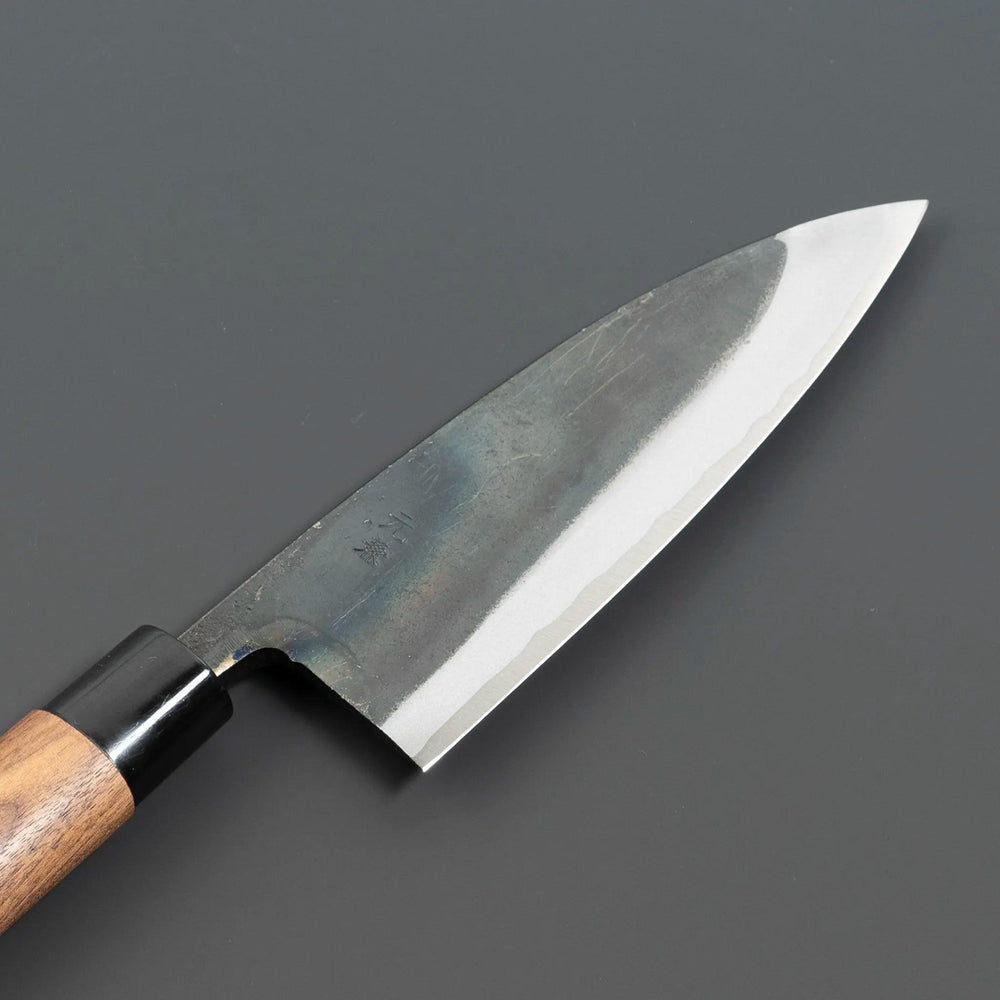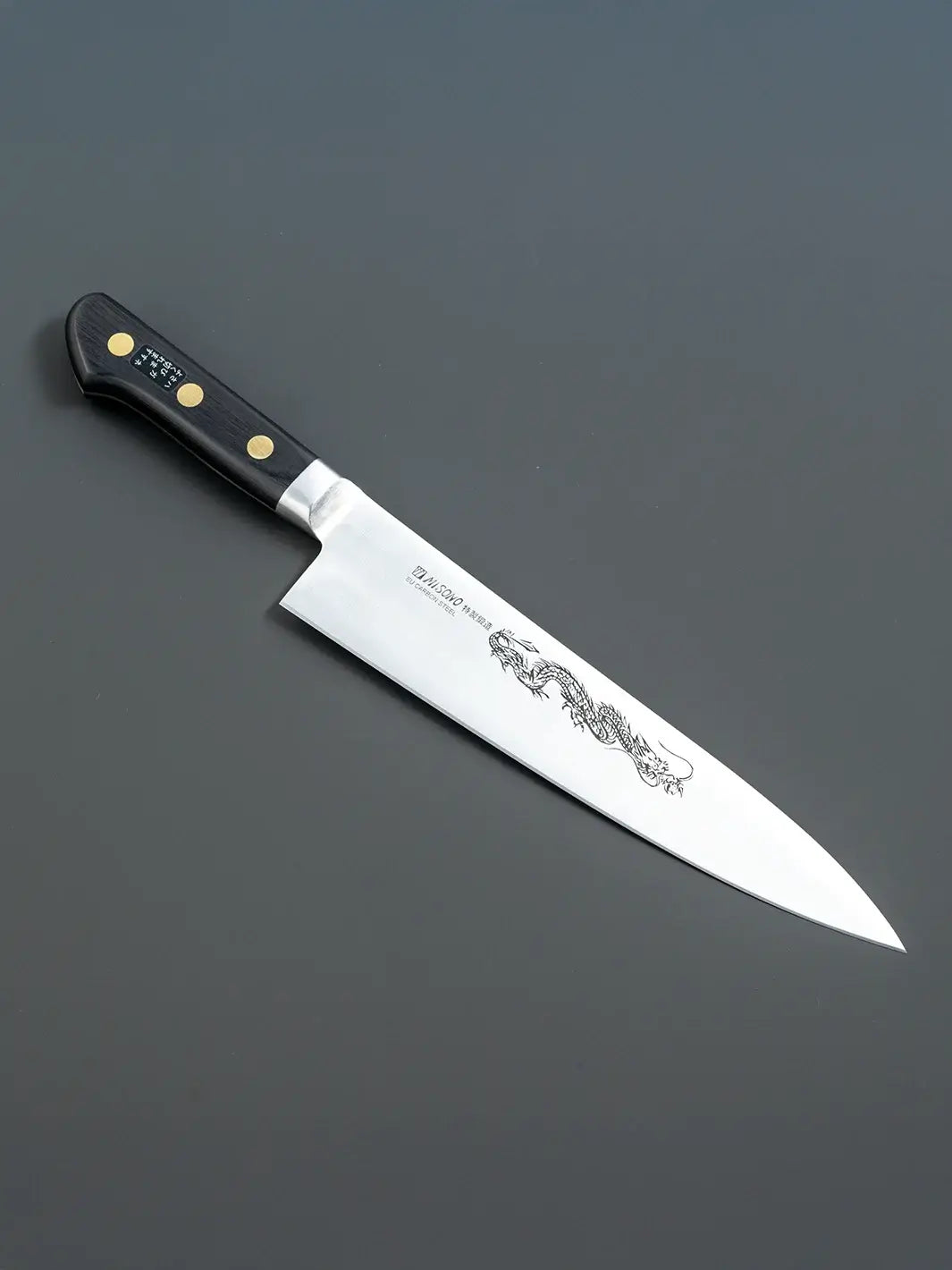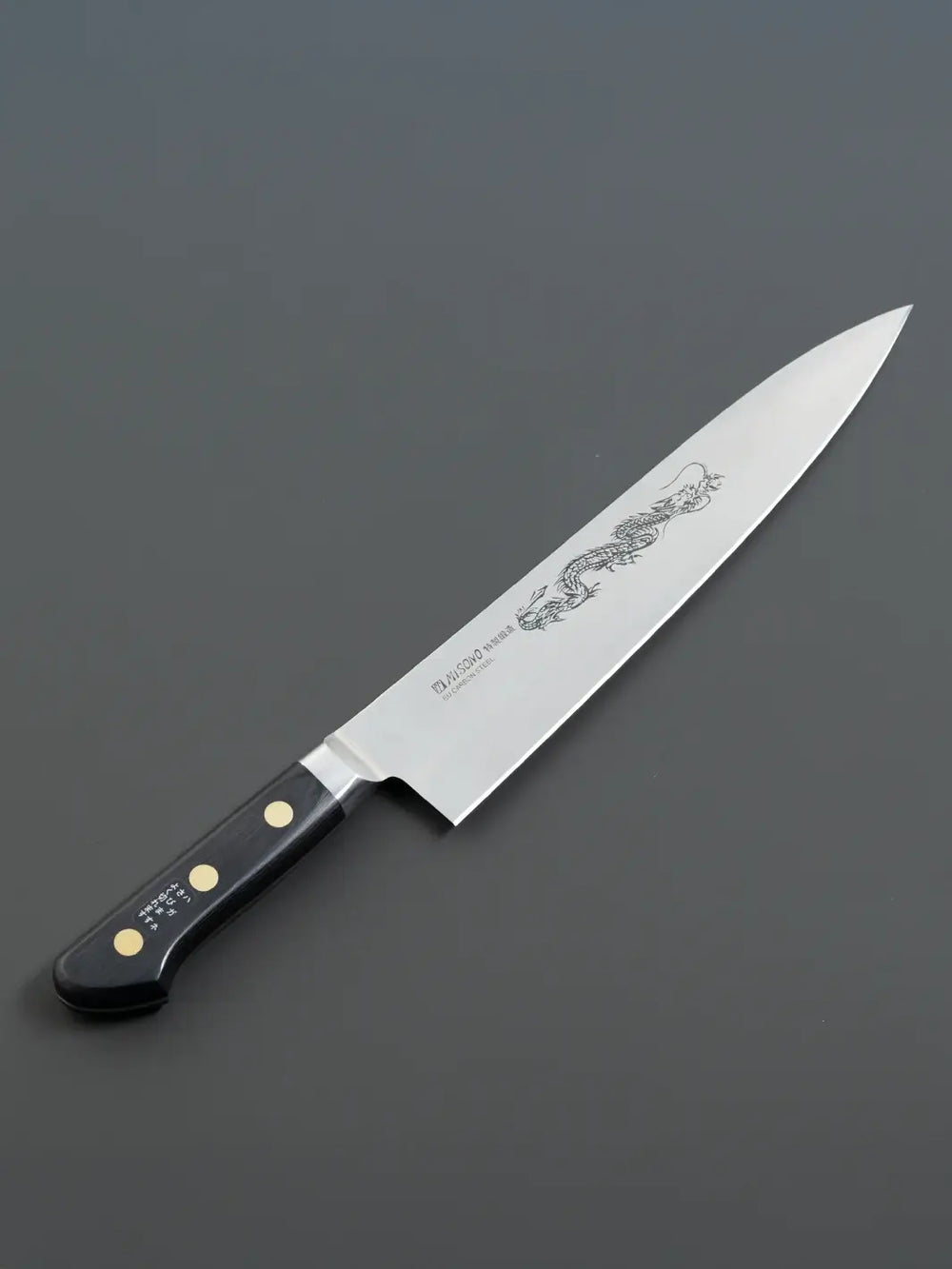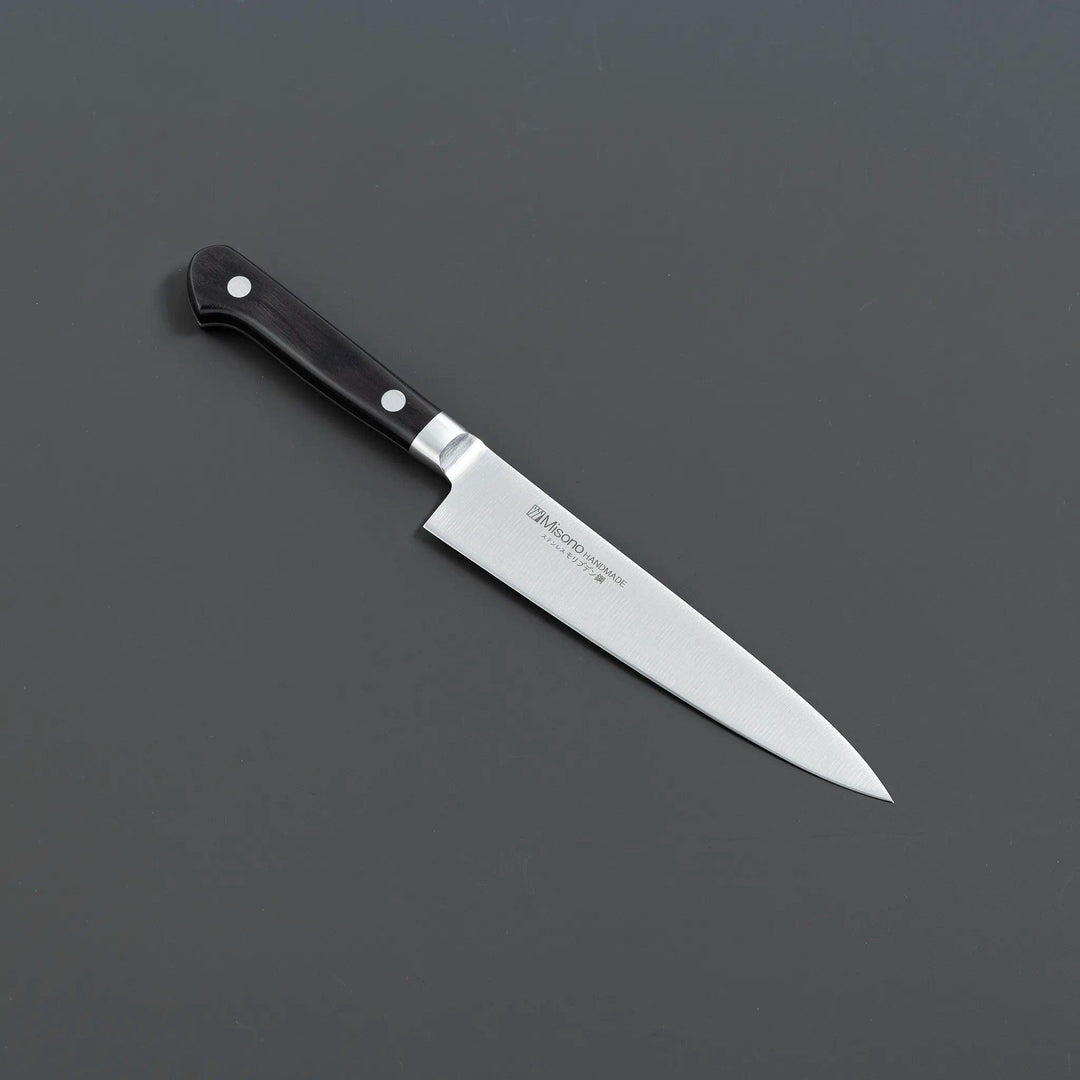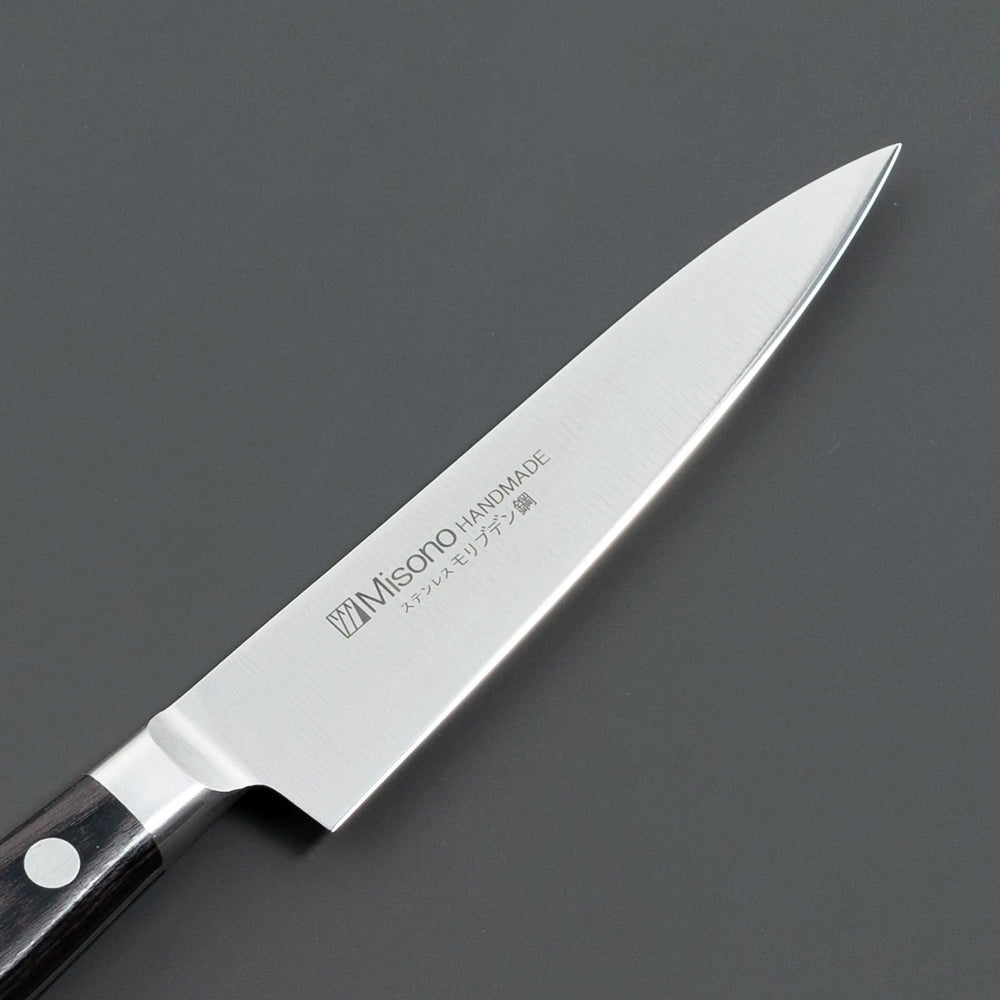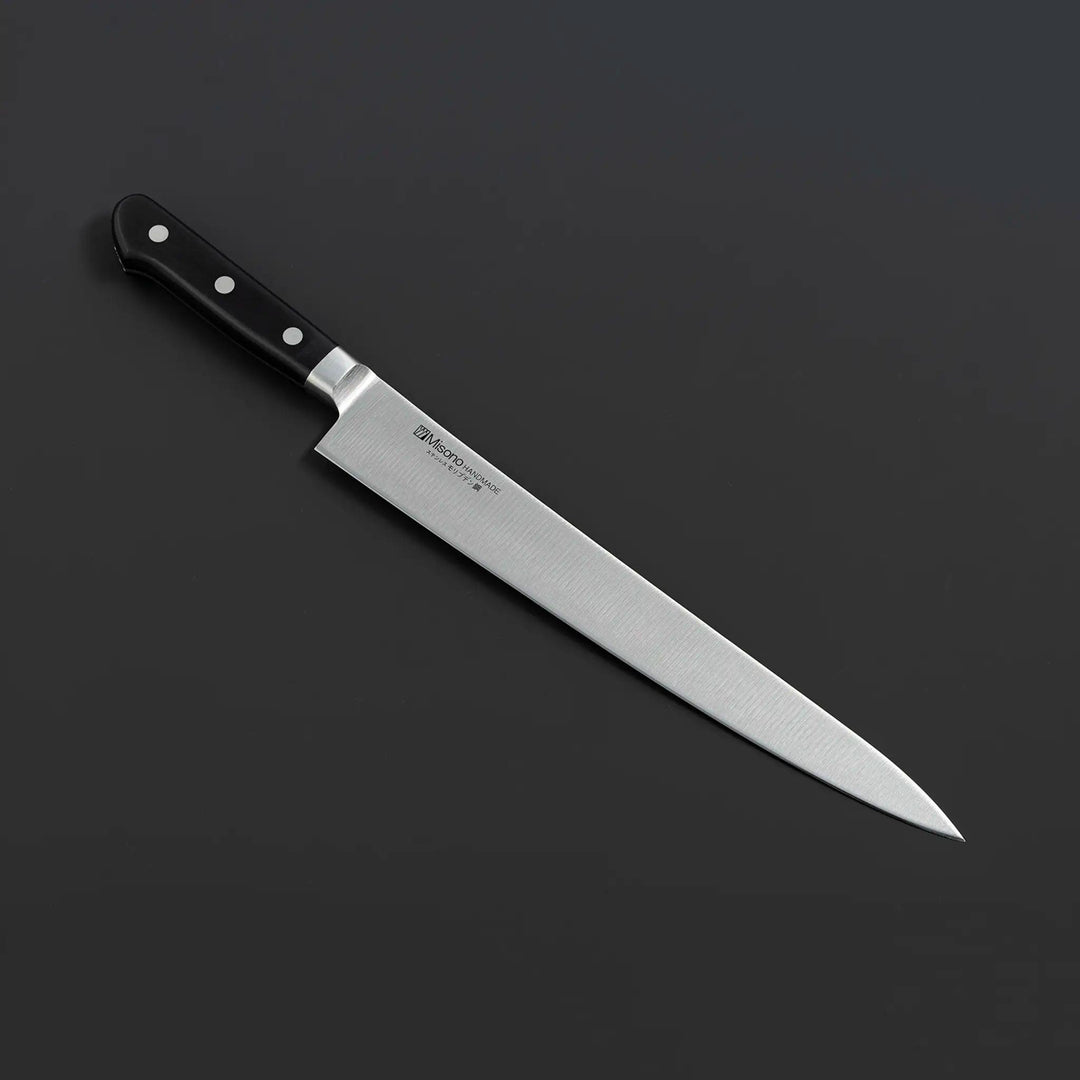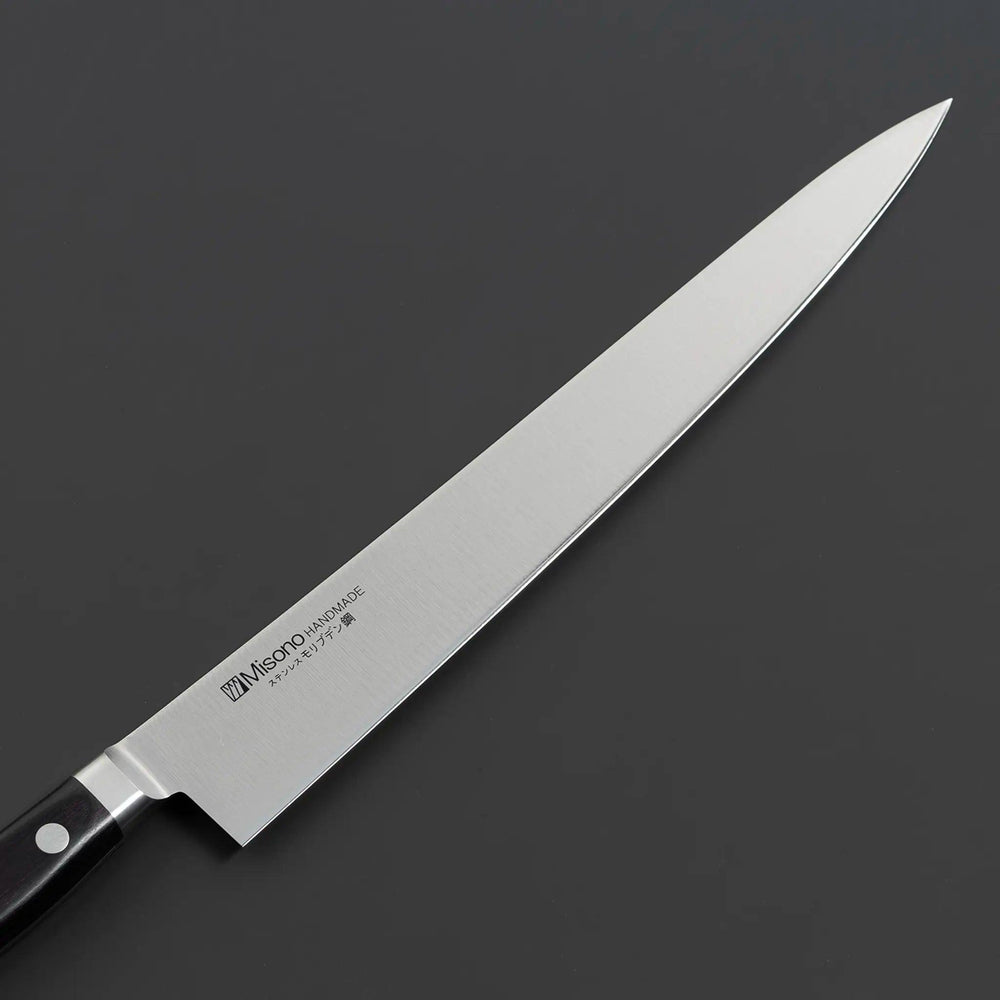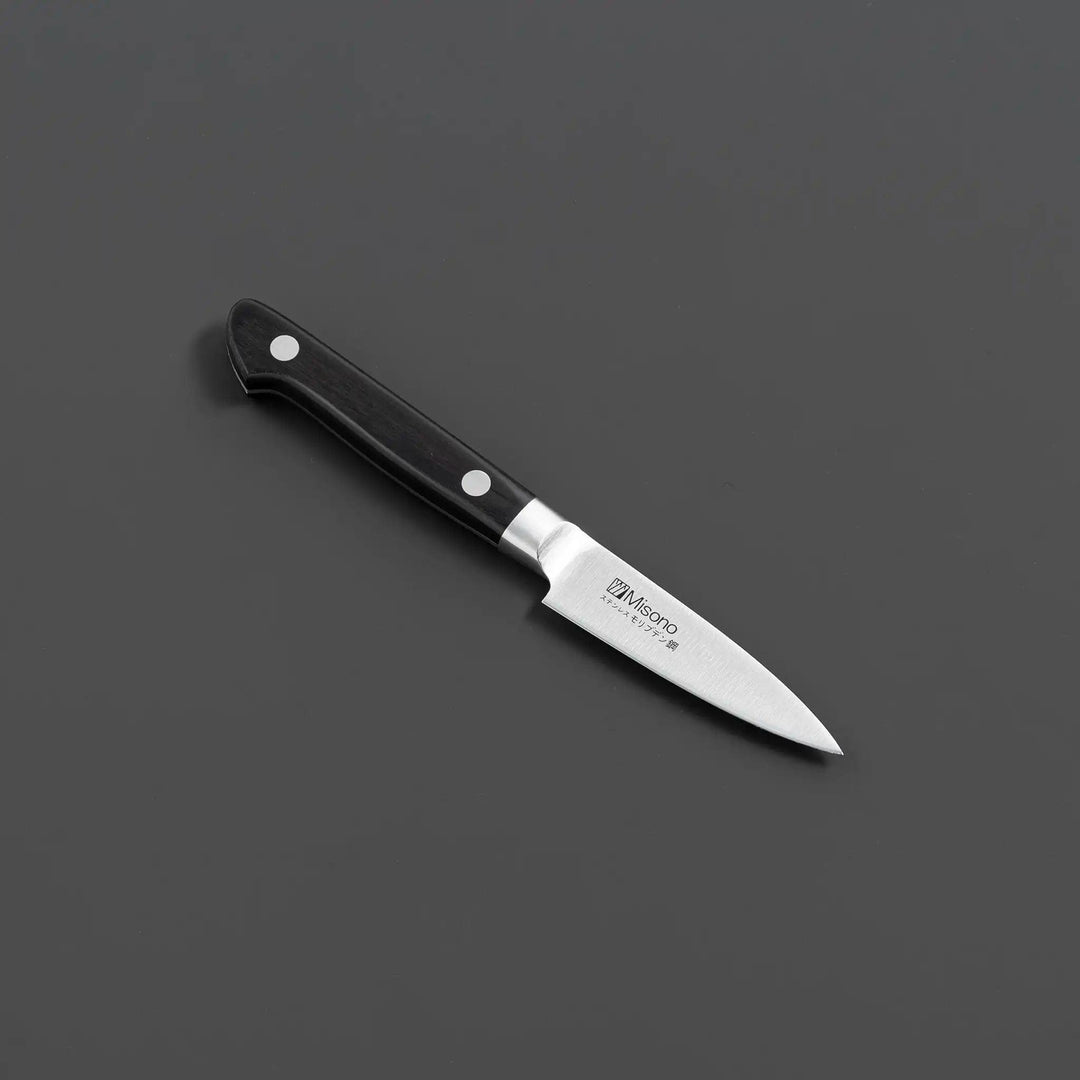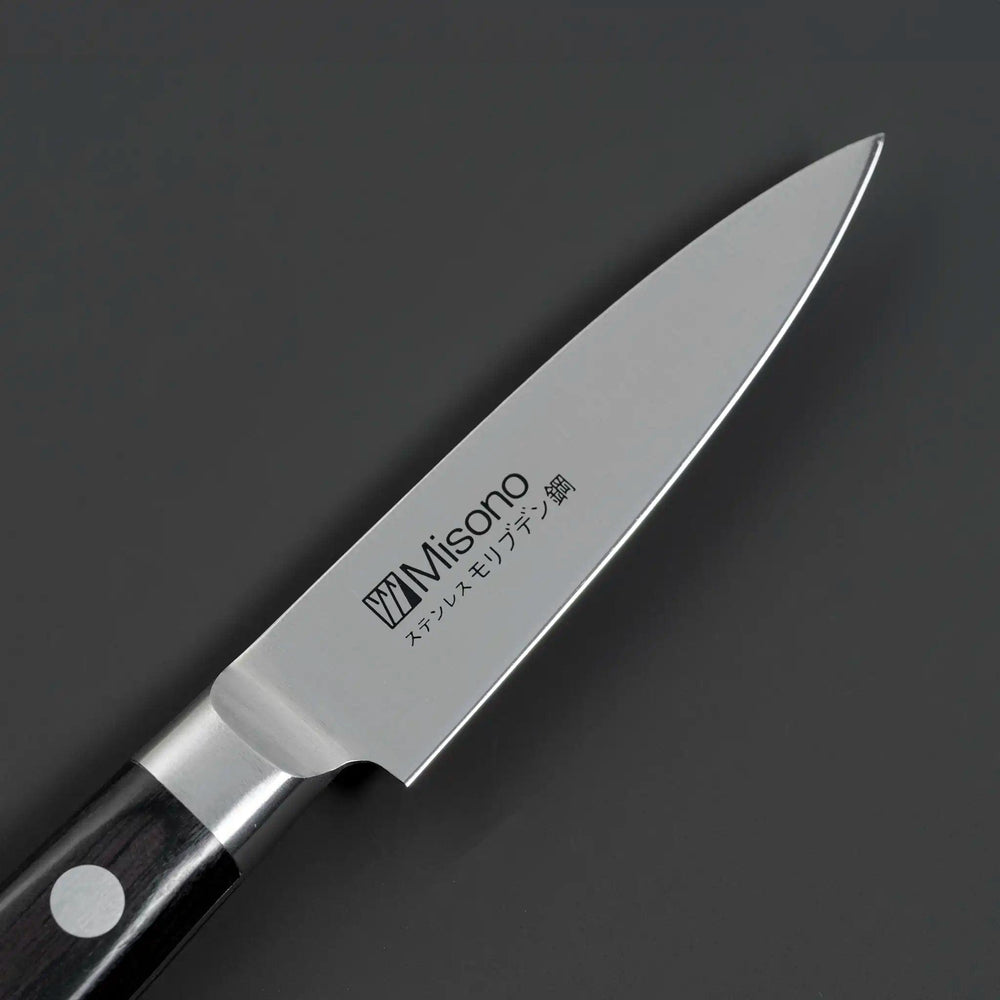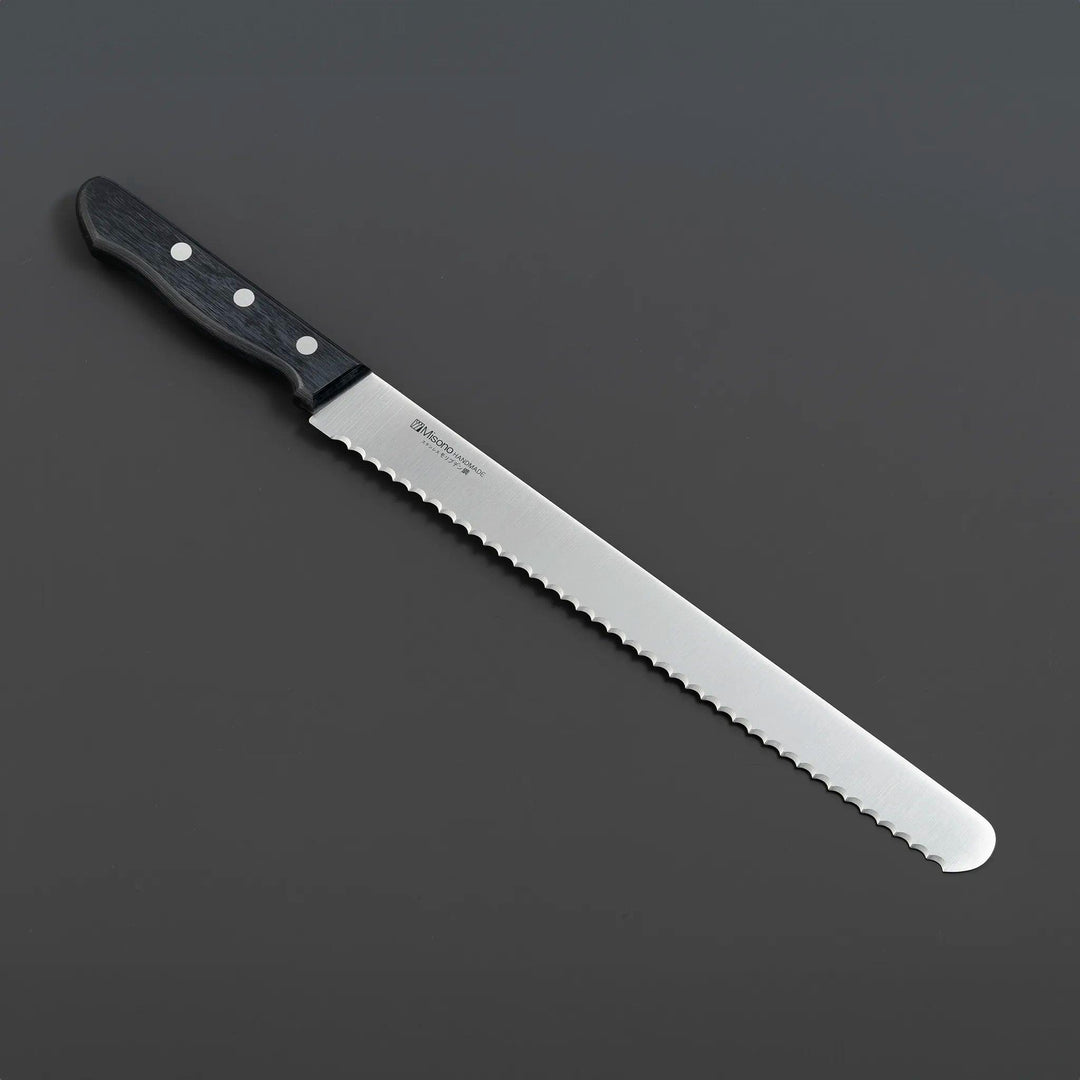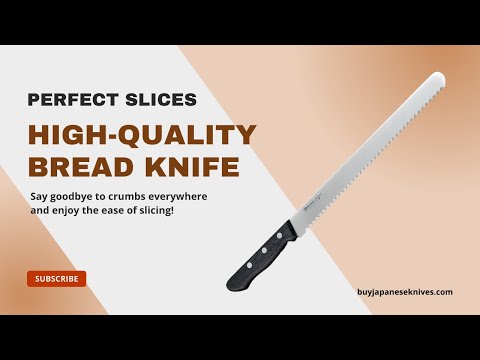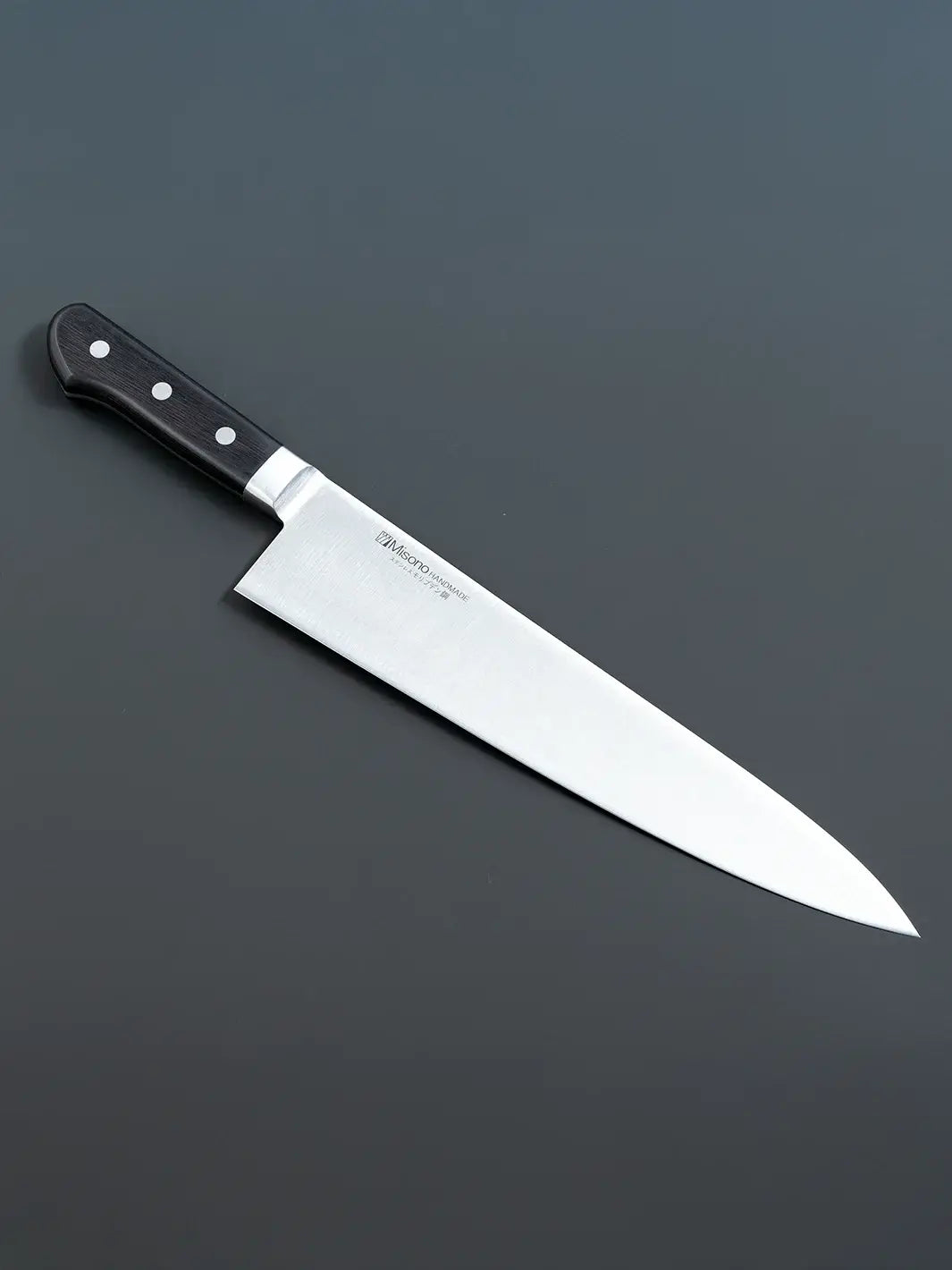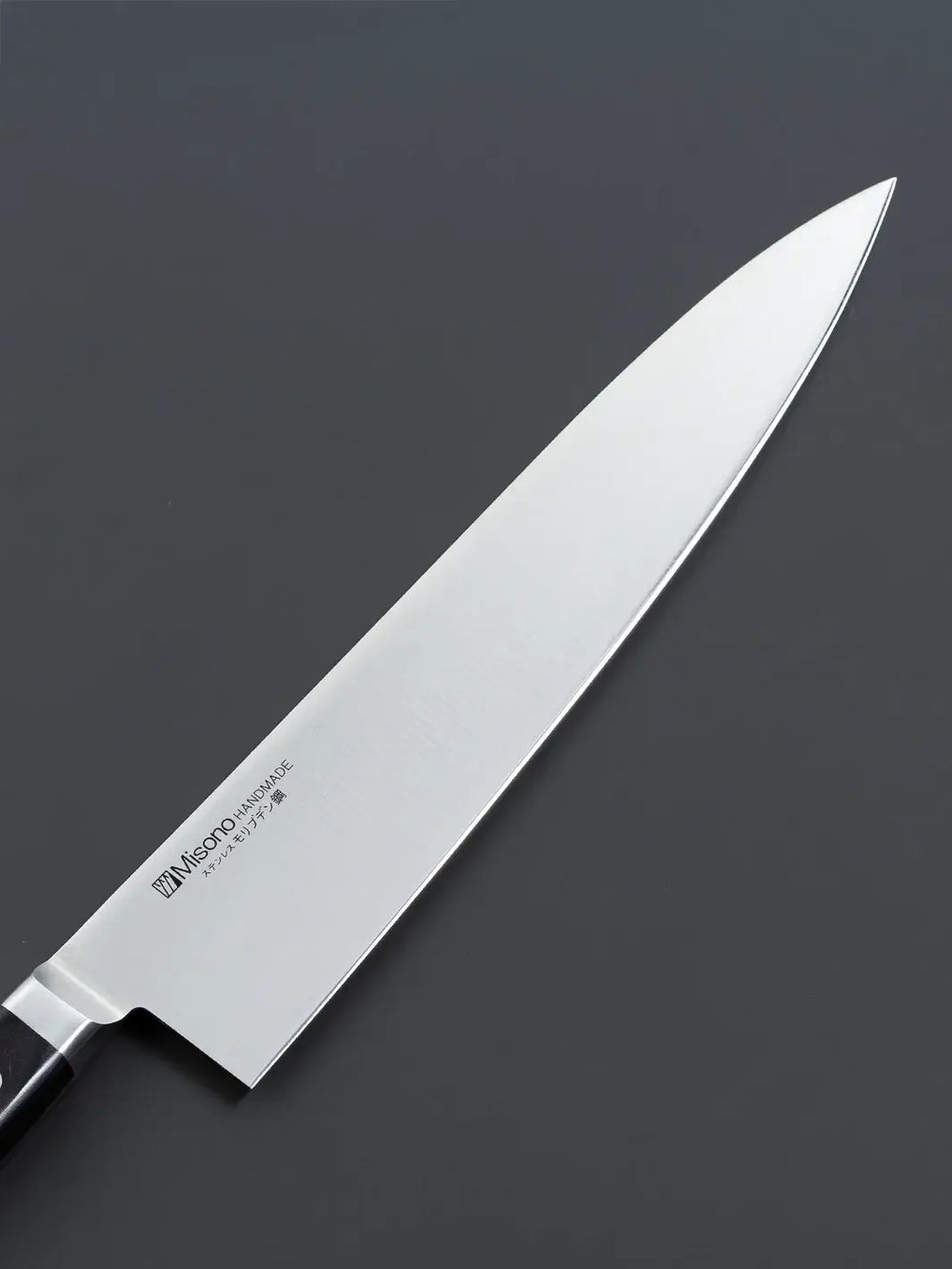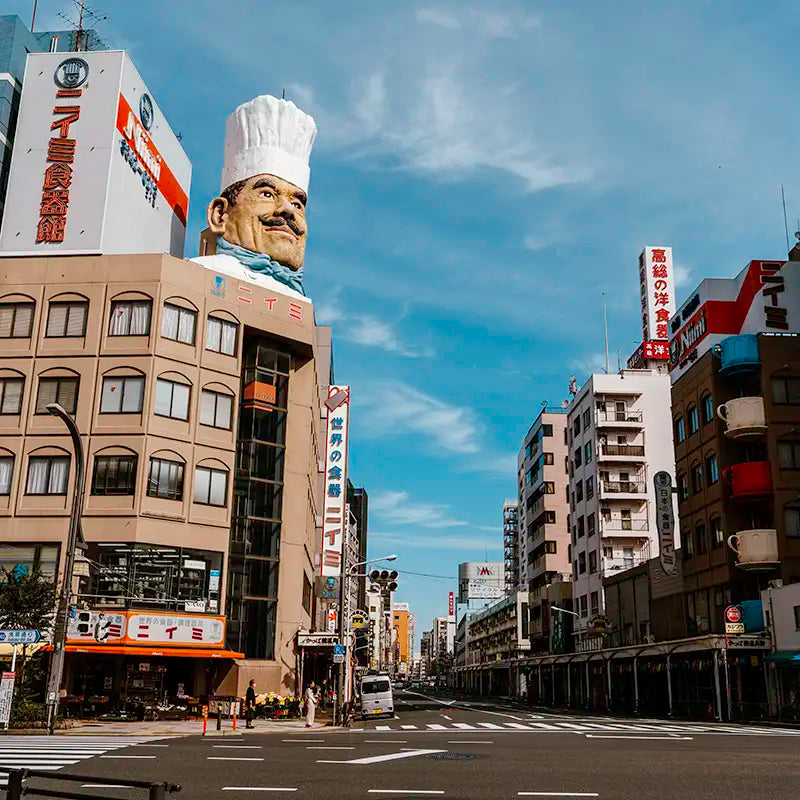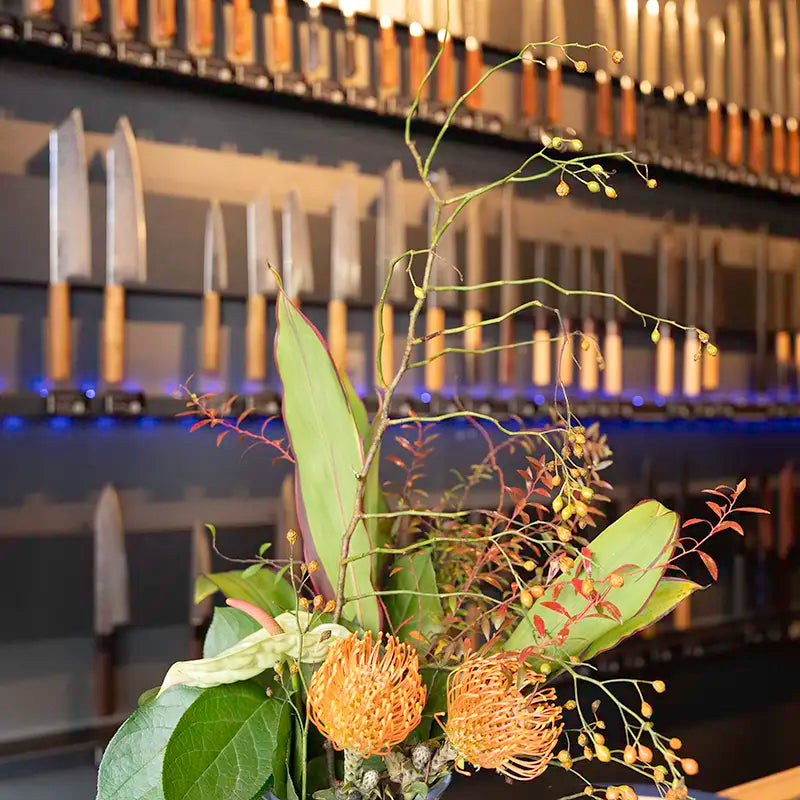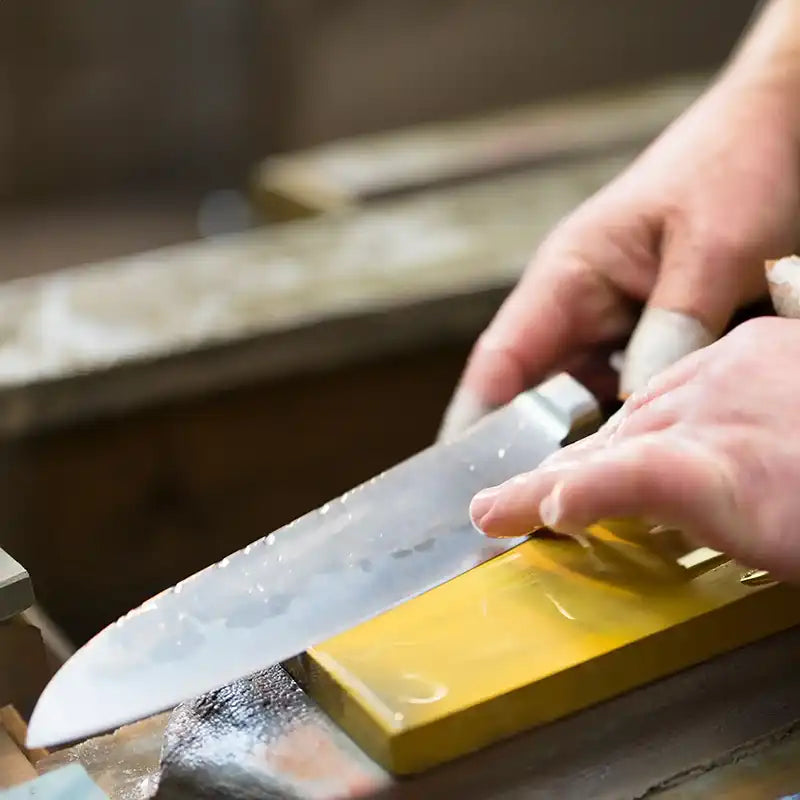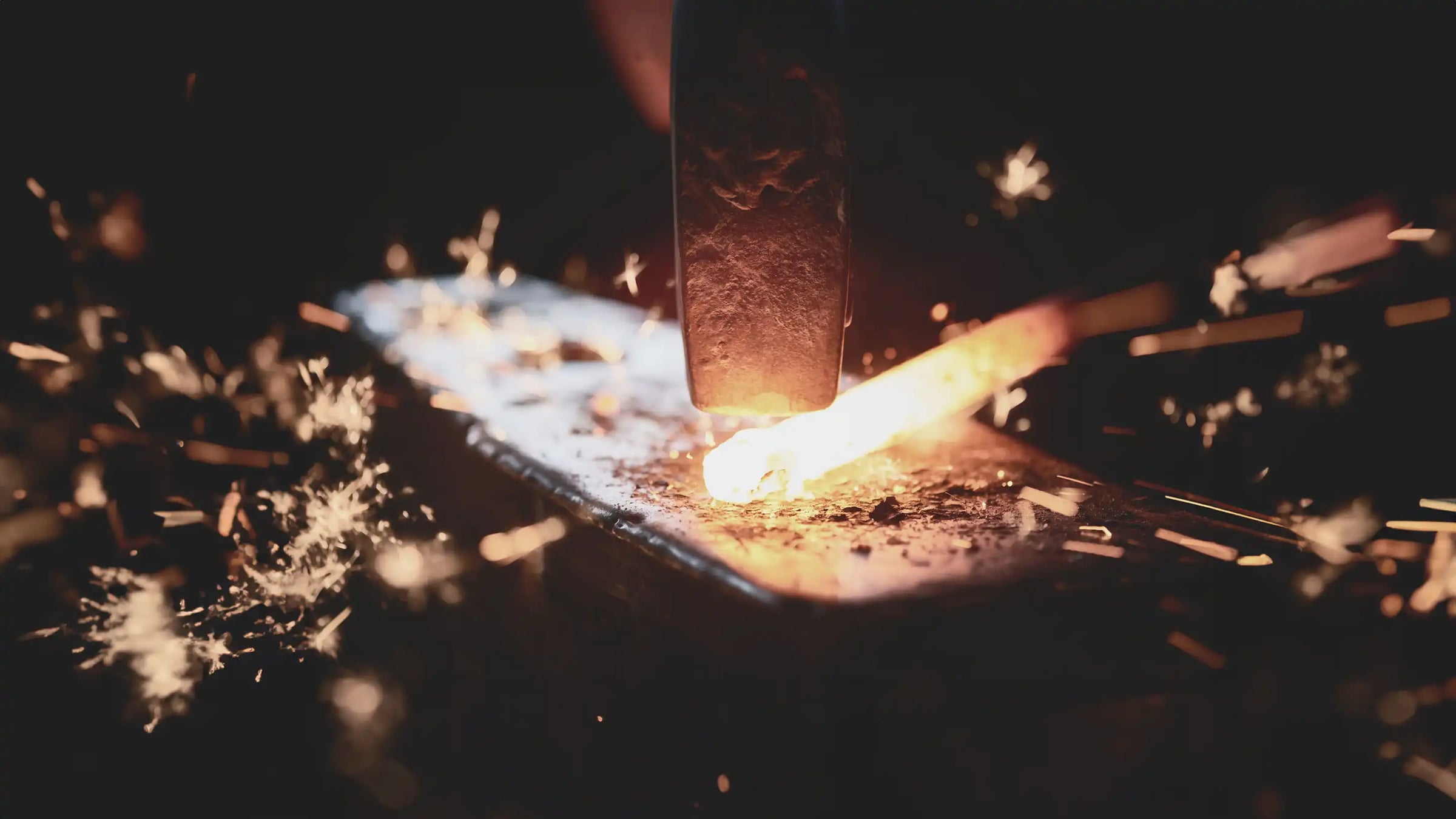
Learn more about our steels.
Guide to Choosing Japanese Knife Steel
There is a lot to learn about steels—it can be quite overwhelming. That’s why we’ve put together this guide to break down the different steel types in a clear and easy-to-understand way.
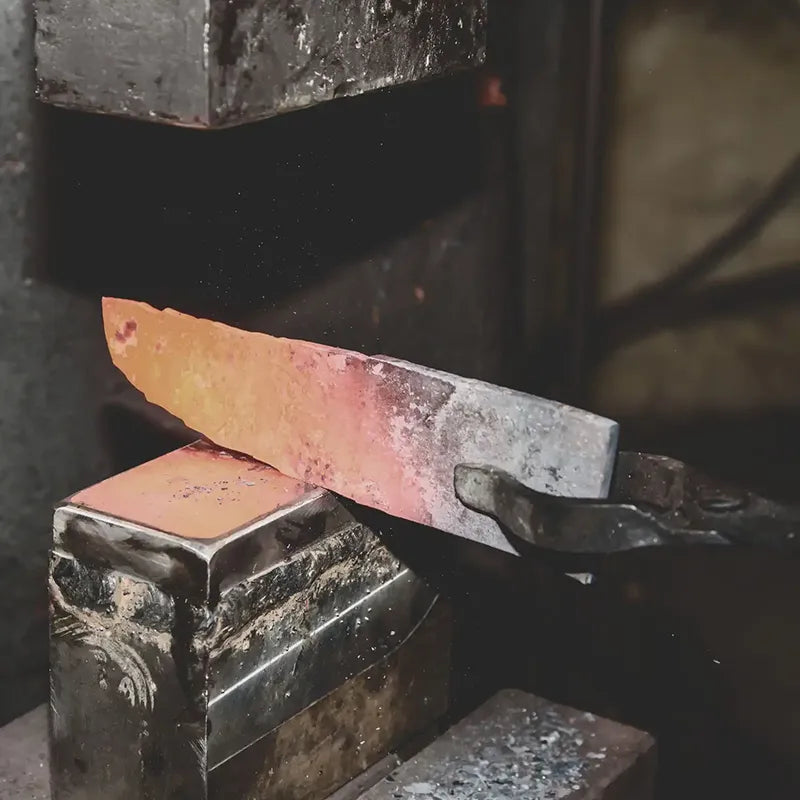
Stainless steel vs. Carbon steel.
- Steel types are usually divided into two categories: stainless steel and high carbon steel. Stainless steel is resistant to oxidation and rust, making it easier to maintain. On the other hand, high carbon steel has a higher carbon content, which allows it to stay sharp for longer, but it is more prone to rust and damage.
- In addition to these, powdered stainless steel is a newer technology that combines the advantages of both. It resists stains like stainless steel while maintaining sharpness like high carbon steel.
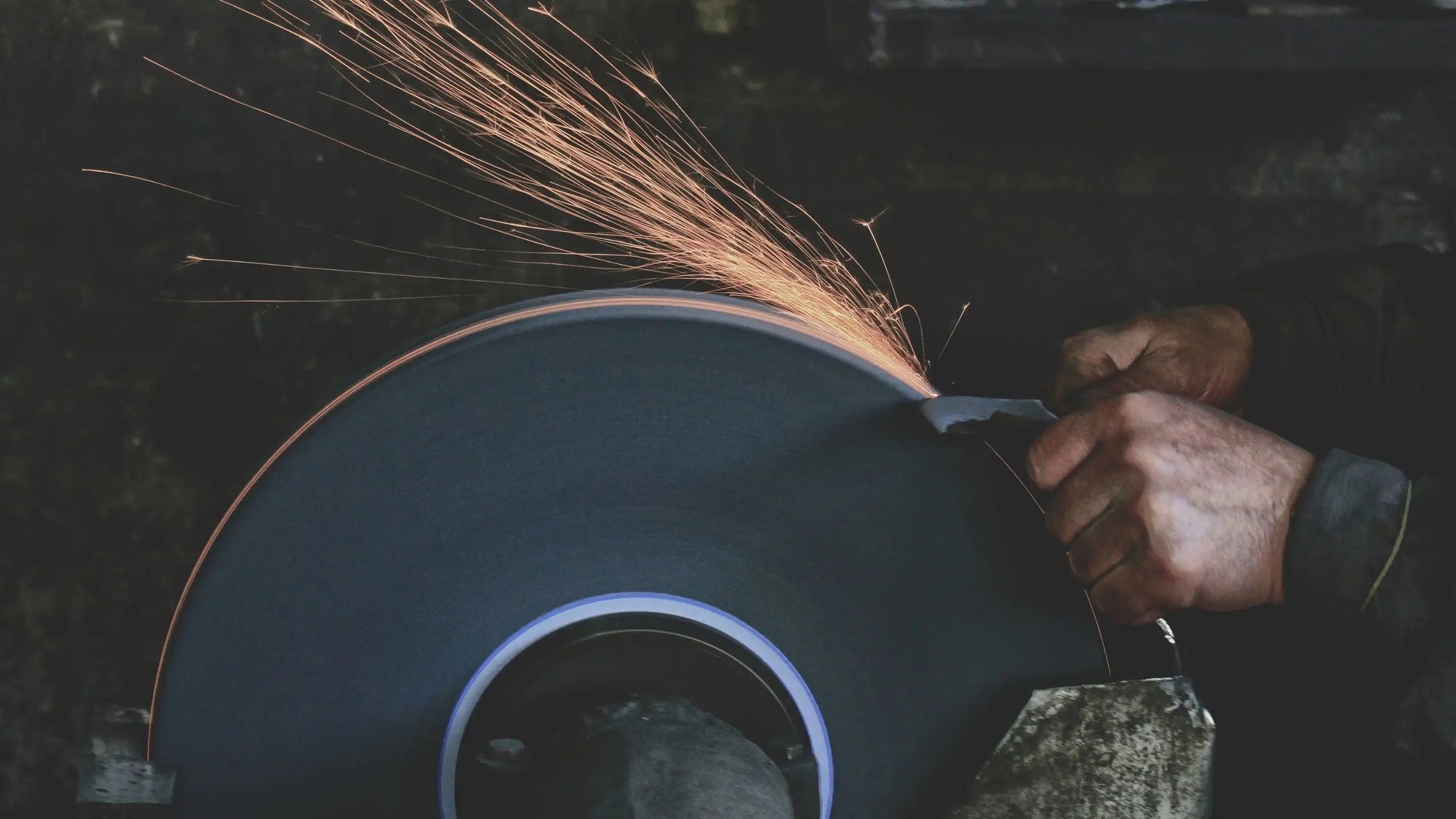
Steel Type Category
Stainless Steel Types
What are Stainless Steels?
- Stainless steel is known for its stain and rust resistance. However, Japanese stainless steel typically has a higher carbon content than other materials. The higher the carbon content, the sharper the steel and the less prone it is to dulling.
Stainless Steel Types
- Characteristics: AUS-8 is a mid-range stainless steel with good corrosion resistance and relatively high toughness. Although it doesn’t offer the hardness or sharpness of more premium stainless steels, its ease of sharpening makes it suitable for everyday use. AUS-8 is commonly used in budget-friendly multi-purpose kitchen knives.
- Origin: Produced by Aichi Steel in Japan.
- Hardness: AUS-8 typically has a hardness between HRC 58-60.
- Maintenance: AUS-8’s corrosion resistance makes it very easy to maintain. Regular cleaning and drying are sufficient. Due to its moderate hardness, it is easy to sharpen with standard sharpening stones.
- Characteristics: AUS-10 is a high-carbon stainless steel from the AUS series, offering a balance between durability, hardness, and corrosion resistance. It has a higher carbon content than AUS-8, making it harder and able to hold a sharper edge. AUS-10 is often compared to VG-10, as both offer similar performance, though AUS-10 is considered slightly softer, making it easier to sharpen. It’s an excellent choice for knives that require a good balance of sharpness, toughness, and rust resistance.
- Origin: Produced by Aichi Steel in Japan.
- Hardness: AUS-10 typically has a hardness of around HRC 58-60, similar to other premium kitchen knife steels.
- Maintenance: Like other stainless steels, AUS-10 is relatively easy to maintain due to its good corrosion resistance. Regular cleaning and drying are necessary to prevent rust, especially after exposure to acidic or salty foods. While it can hold a sharp edge for a reasonable amount of time, occasional sharpening is recommended to maintain peak performance.
- Characteristics: VG-10 is one of the most famous stainless steels from Japan, known for its excellent corrosion resistance, sharpness, and wear resistance. It has moderate hardness, maintaining a sharp edge while performing well in daily use. The vanadium and cobalt in VG-10 enhance its hardness and wear resistance while making it easy to sharpen.
- Origin: Produced by Takefu Special Steel Co. in Japan.
- Hardness: VG-10 typically has a hardness between HRC 60-61.
- Maintenance: Due to its good corrosion resistance, VG-10 is relatively easy to maintain. Regular cleaning and keeping the blade dry are sufficient, but prolonged immersion in water or improper sharpening can affect its performance.
- Characteristics: Gingami No.3 is a high-quality stainless steel known for its strong corrosion resistance. It combines the rust resistance of stainless steel with the sharpness of high-carbon steel, making it popular for both home and professional kitchens. Gingami No.3 offers a good balance of sharpness and hardness, making it suitable for frequent use.
- Origin: Produced by Hitachi Metals in Japan.
- Hardness: Gingami No.3 typically has a hardness between HRC 59-61.
- Maintenance: Gingami No.3 is relatively easy to maintain due to its strong corrosion resistance. Regular cleaning and drying after use are sufficient, with occasional sharpening to maintain the edge. No special rust prevention treatment is needed.
Stainless Steel Types
View all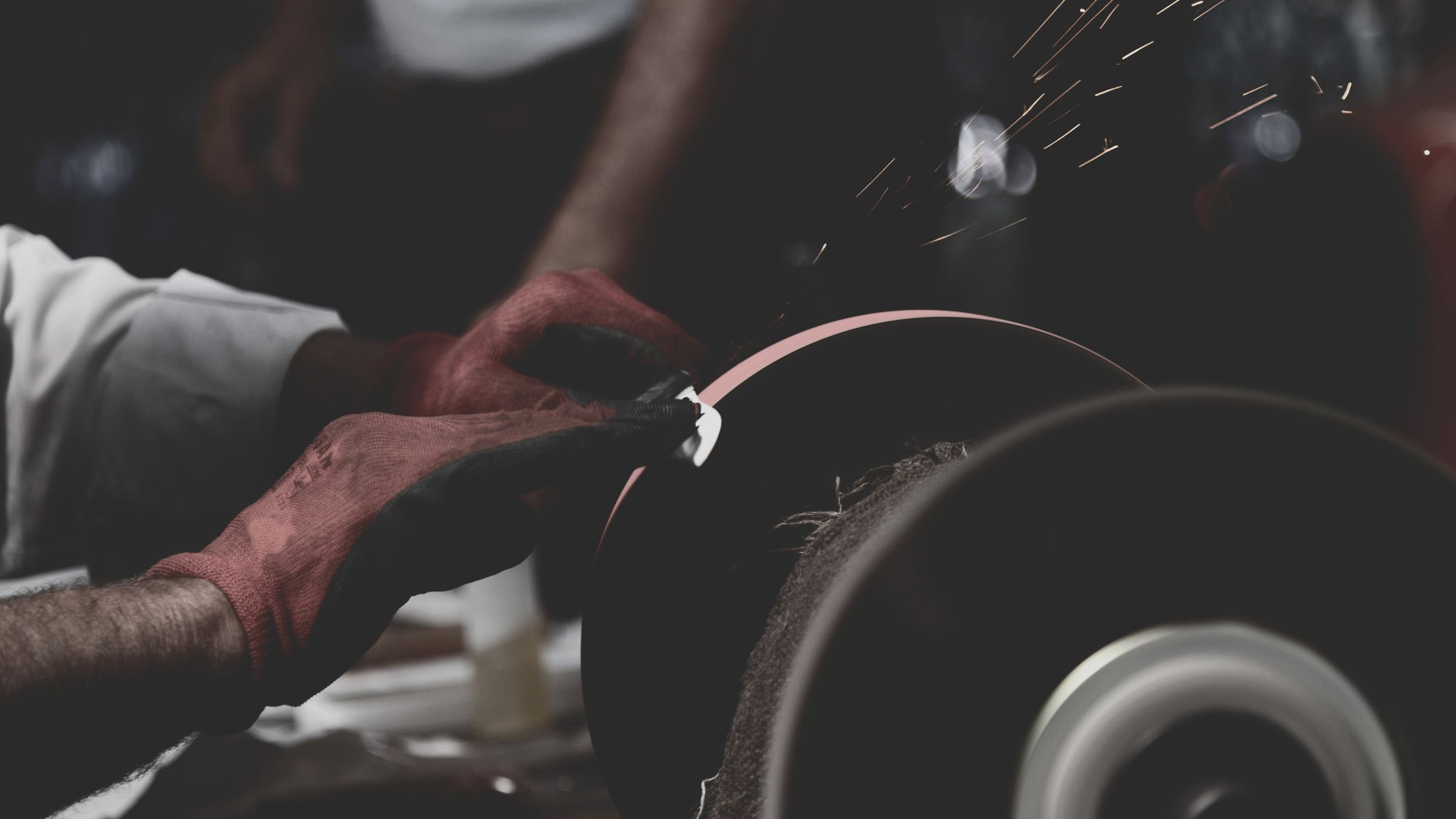
Stainless Steel Types
Carbon Steel Types
What are Carbon Steels?
- Carbon steel is known for its high carbon content, which provides superior hardness and sharpness. This makes it especially suited for tasks that require precision and cutting power.
- However, due to the lack of chromium, carbon steel is prone to rust and tarnish. As a result, it requires regular maintenance, including cleaning and drying after use.
- Despite the extra care, carbon steel offers excellent edge retention and is easy to sharpen, making it a popular choice among skilled users and professional chefs. Its cutting performance is often unmatched, which is why many favor it despite the added upkeep.
Carbon Steel Types
- Characteristics: Blue Super Steel is an enhanced version of Blue Steel, with added carbon, chromium, and tungsten to increase hardness, wear resistance, and edge retention. It stays sharp much longer than Blue Steel No.1 and No.2, making it ideal for kitchen environments requiring frequent cutting. One of the key advantages of Blue Super Steel is its high hardness and durability, which allows it to maintain a sharp edge even after repeated use.
- Origin: Produced by Hitachi Metals in Japan.
- Hardness: Blue Super Steel has a hardness between HRC 63-65, making it the hardest in the Blue Steel series.
- Maintenance: Despite its excellent cutting performance, Blue Super Steel is still prone to rust due to its high carbon content. It requires careful maintenance similar to other high-carbon steels, including immediate cleaning, thorough drying after use, and regular oiling to prevent oxidation and rust.
- Characteristics: Blue Steel No.1 is a version of Blue Steel with higher hardness and wear resistance. It contains a higher percentage of carbon, chromium, and tungsten, making it sharper and able to retain an edge longer than Blue Steel No.2. Its sharpness is excellent, making it suitable for professional chefs who need precise cutting. However, while it offers great hardness, its toughness is slightly lower compared to Blue Super Steel.
- Origin: Also produced by Hitachi Metals.
- Hardness: Blue Steel No.1 typically has a hardness of HRC 62-64.
- Maintenance: Blue Steel No.1 offers good wear resistance but is still susceptible to rust. It needs to be cleaned and dried immediately after use, with regular oiling to prevent oxidation. Proper care will help extend its lifespan.
- Characteristics: Blue Steel No.2 is the most common in the Blue Steel series and offers a good balance of toughness and edge retention. Compared to Blue Steel No.1, Blue Steel No.2 has slightly lower carbon content, making it tougher and less prone to chipping under heavy use. Although it is not as sharp as Blue Steel No.1 or Blue Super Steel, Blue Steel No.2 provides a balance of durability and ease of maintenance, making it a popular choice for professional chefs.
- Origin: Produced by Hitachi Metals.
- Hardness: Blue Steel No.2 generally has a hardness of HRC 61-63.
- Maintenance: Like other high-carbon steels, Blue Steel No.2 is prone to rust. It should be cleaned and dried immediately after use, and regular application of anti-rust oil is recommended to maintain its performance. Although it has better toughness, it should not be exposed to moisture for extended periods.
- Summary:
- Blue Super Steel: Highest hardness, extremely sharp, and durable, but more brittle and requires careful handling.
- Blue Steel No.1: Offers excellent sharpness and wear resistance, ideal for precision cutting tasks, but slightly more prone to chipping.
- Blue Steel No.2: Greater toughness, ideal for frequent use with balanced performance, and relatively easier to maintain.
- Characteristics: White Steel No.1 is a high-purity Japanese carbon steel with almost no impurities, offering exceptional cutting performance. It has a higher carbon content (typically around 1.2% to 1.4%), allowing the blade to be sharpened to a very fine edge and retain sharpness over extended use. Compared to White Steel No.2, White Steel No.1 is harder and sharper, but slightly less tough, meaning it can be more prone to chipping or damage during use.
- Origin: Produced by Hitachi Metals in Japan.
- Hardness: White Steel No.1 typically has a hardness of HRC 61-64.
- Maintenance: While White Steel No.1 is incredibly sharp, it is also highly prone to rust due to its lack of corrosion resistance. Immediate cleaning and thorough drying after use are essential. Regularly applying rust-preventive oil is recommended to avoid oxidation, and the knife should not be exposed to moisture or acidic environments for extended periods.
- Characteristics: White Steel No.2 is a slightly softer version of White Steel No.1, with a lower carbon content (about 1.0% to 1.2%). It still offers excellent sharpness, but is less brittle and more resistant to chipping, making it better suited for tasks that involve frequent use or tougher materials. Although White Steel No.2 is slightly less sharp than White Steel No.1, it is still more than adequate for most cutting tasks.
- Origin: Also produced by Hitachi Metals in Japan.
- Hardness: White Steel No.2 typically has a hardness of HRC 60-62.
- Maintenance: Like White Steel No.1, White Steel No.2 is prone to rust, so proper care is essential. It should be cleaned and dried immediately after use, and applying rust-preventive oil regularly is advised. Although more durable than White Steel No.1, it should still be kept away from moisture for long periods to prevent rust.
- Characteristics: Sweden carbon steel is renowned worldwide for its high quality and purity, with very few impurities. Produced in Sweden, this steel is highly favored by knife makers for its excellent processing properties and sharpness. It provides outstanding sharpness and long-lasting edge retention, while also offering good toughness, making it suitable for heavy-duty use. Compared to Japanese carbon steel, Sweden carbon steel has fewer impurities, giving it more consistent performance.
- Origin: Produced in Sweden.
- Hardness: Sweden carbon steel typically has a hardness of HRC 59-61, though this can vary slightly depending on the heat treatment process used for specific knives.
- Maintenance: While Sweden carbon steel is tough, it is still a carbon steel and prone to rust. It should be treated like other high-carbon steels, with immediate cleaning and thorough drying after use, and applying oil to prevent oxidation. Long exposure to moisture or salt should be avoided to preserve its performance.
Carbon Steel Types
View all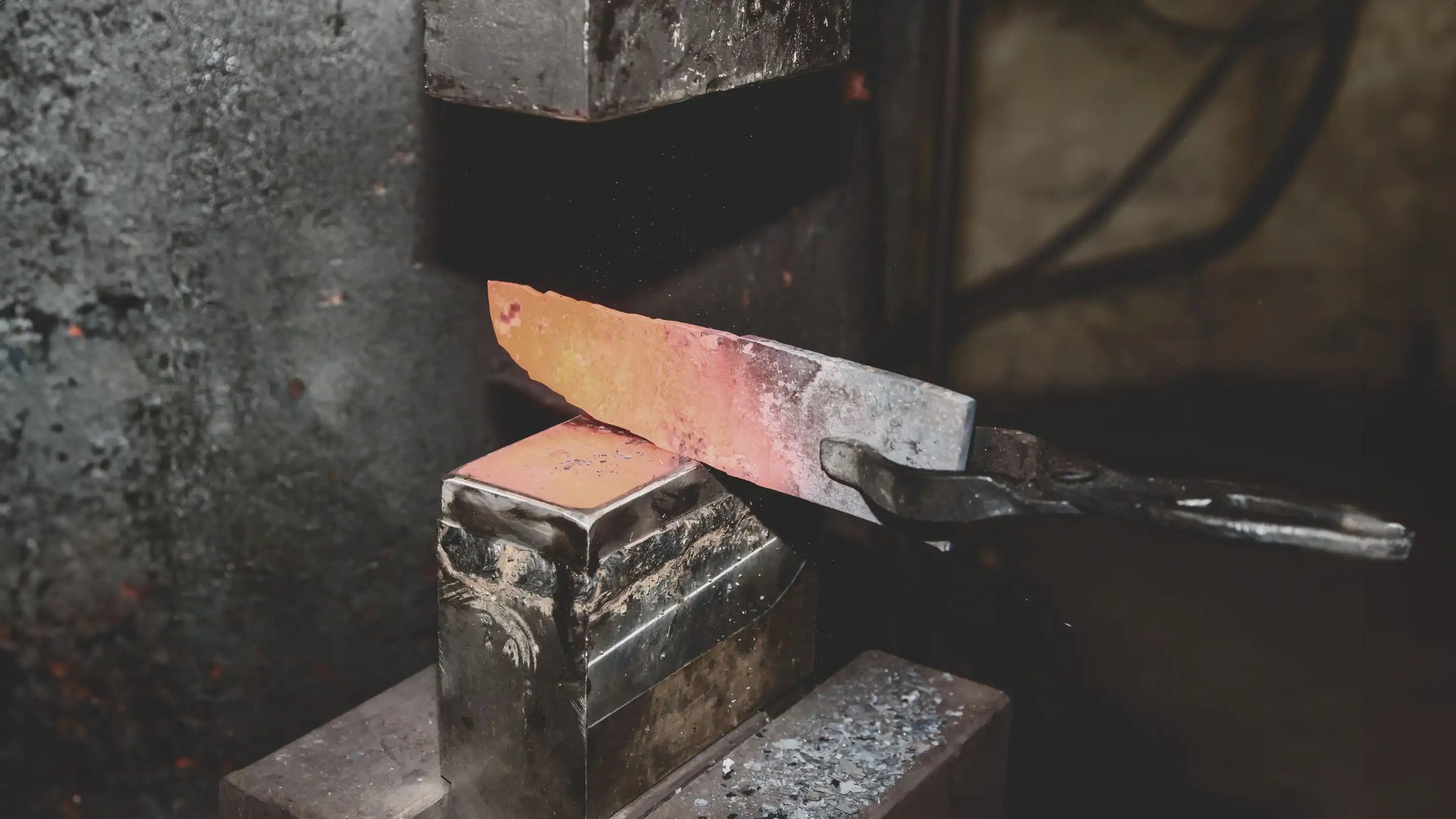
Steel Type Category
Powdered Stainless Steel
What are Powdered Stainless Steel?
- Powdered Stainless Steel is a type of high-performance steel made using powder metallurgy, a process that involves compressing fine metal powders into a solid form before heating it to bond the particles. This results in a steel with very fine grain structure, which enhances its overall performance.
- Powdered stainless steel combines the benefits of traditional stainless steel (corrosion resistance) with the sharpness and hardness of high-carbon steel. It’s highly regarded for its long-lasting edge, making it a popular choice for premium knives that require precision, durability, and ease of maintenance.
- Origin:Produced by manufacturers like Takefu Special Steel in Japan, powdered stainless steels are typically used in high-end knives for both professional chefs and enthusiasts.
Powdered Stainless Steel
View all🔪 Choosing the right steel for your Japanese knife is key to ensuring performance and durability. Our guide explores the most popular Japanese knife steels, including their unique characteristics, hardness levels, and maintenance requirements.
✨ Looking for sharpness, edge retention, or easy maintenance? Learn how to select the best steel that suits your cooking needs, whether you’re a professional chef or a home cook.
📖 Explore our detailed guide and make an informed decision to find the perfect blade for your kitchen.
Terms to Understand
Hardness
The degree of hardness of steel largely depends on the amount of carbon it contains; the higher the carbon content, the harder the steel is.
The Hardness Rockwell C scale, or HRC scale, is widely used when measuring hardness. The majority of kitchen knives will measure from 52 to 68 HRC, with Japanese steels usually situated at the upper end between 58–68 HRC.
Durability
The ability to withstand damage from bending, twisting or cutting is referred to as durability, with softer steels displaying greater flexibility while harder steels are more prone to brittleness.
Durable steels may not be as sharp as harder materials, however, they are ideal for demanding tasks. When cutting tough materials such as winter squash, cheese and bone, using a highly durable knife is recommended to minimize the risk of chipping.
More Terms
Sharpness
The sharpness of a knife is determined by a few factors, chiefly the hardness of the steel at the blade's core. Harder steels can be sharpened to a finer edge while also retaining said edge better than softer steels, which should be ground at a greater thickness.
It is also important to consider the grain structure of the steel, as a finer grain structure results in a more acute edge. By refining the grains of the steel, it is possible to achieve a sharper cutting edge
Edge Retention
Edge Retention is a measure of a steel's ability to maintain a sharp edge over time. It is dependent upon the hardness of the steel itself, with harder steels being able to sustain a sharp edge for prolonged periods of time due to their superior hardness in comparison to softer steels.
Japanese steels boast superior edge retention in comparison to other steels, with some varieties being capable of retaining their sharp edge over a period of up to a year prior to needing to be sharpened.




